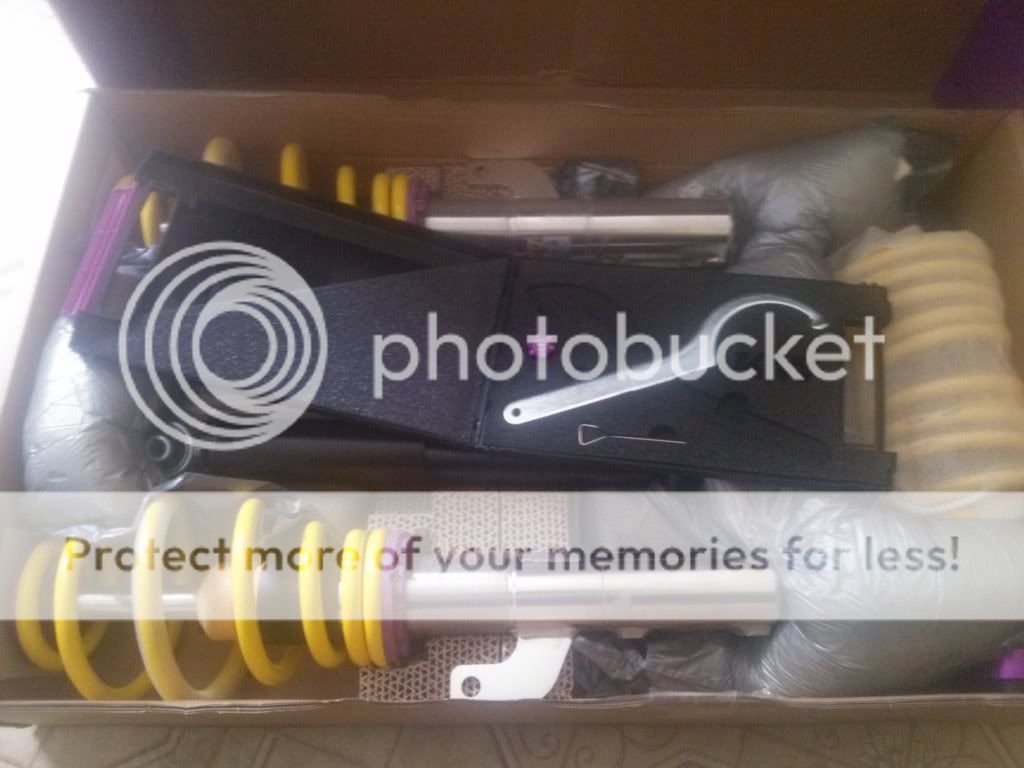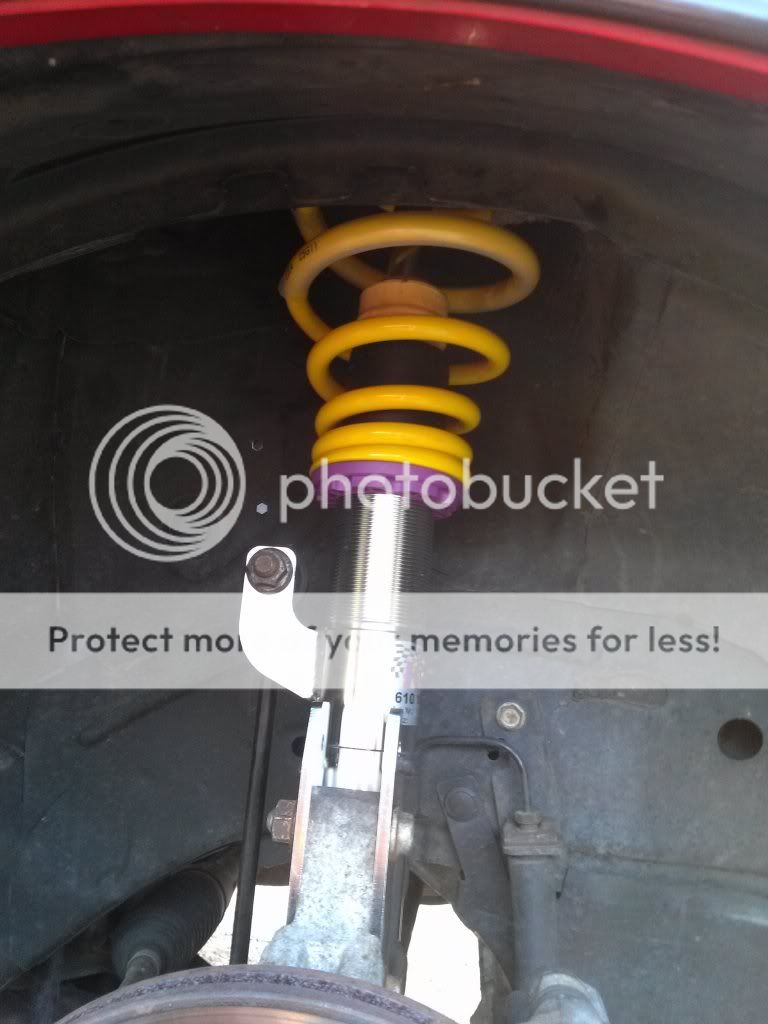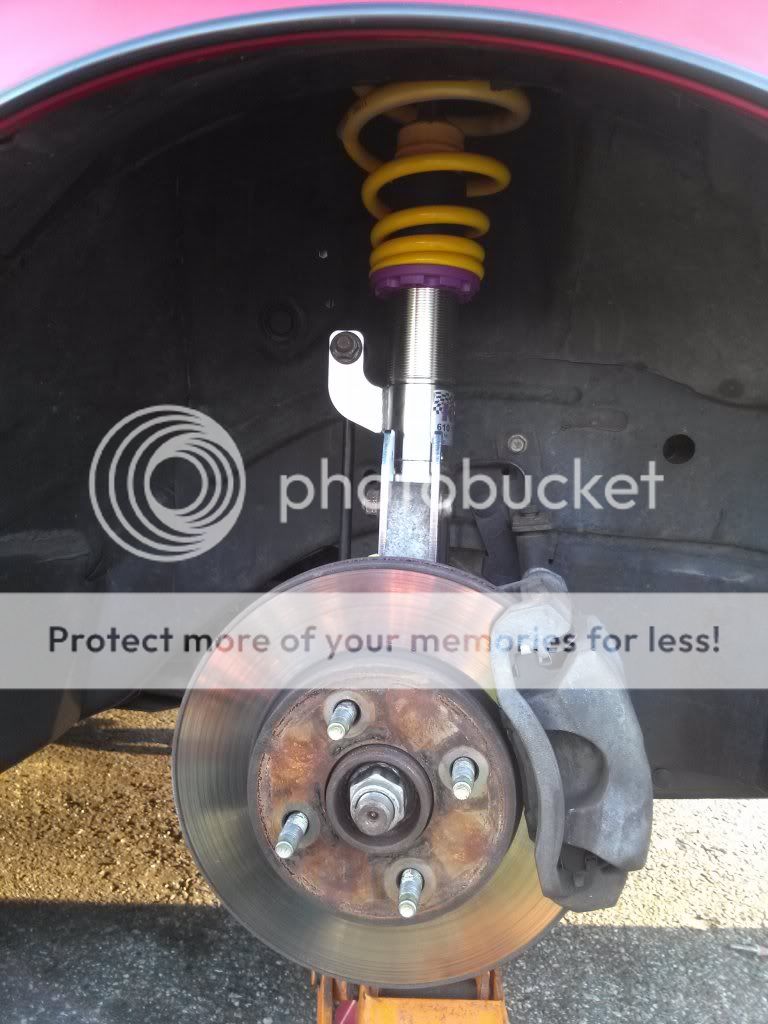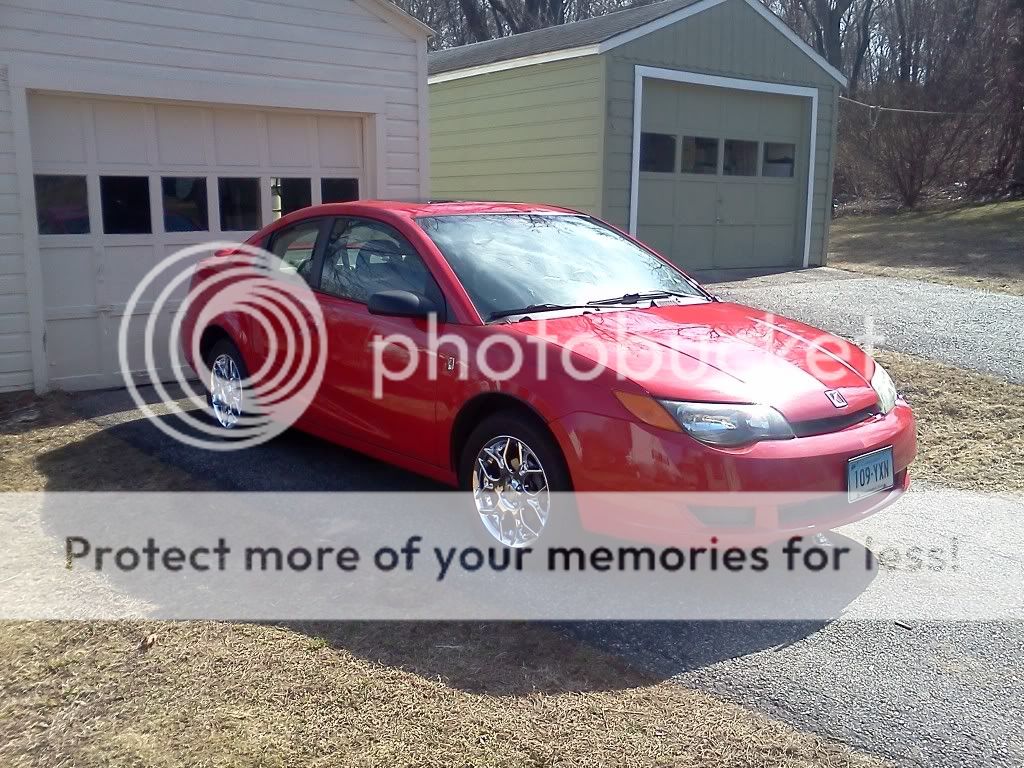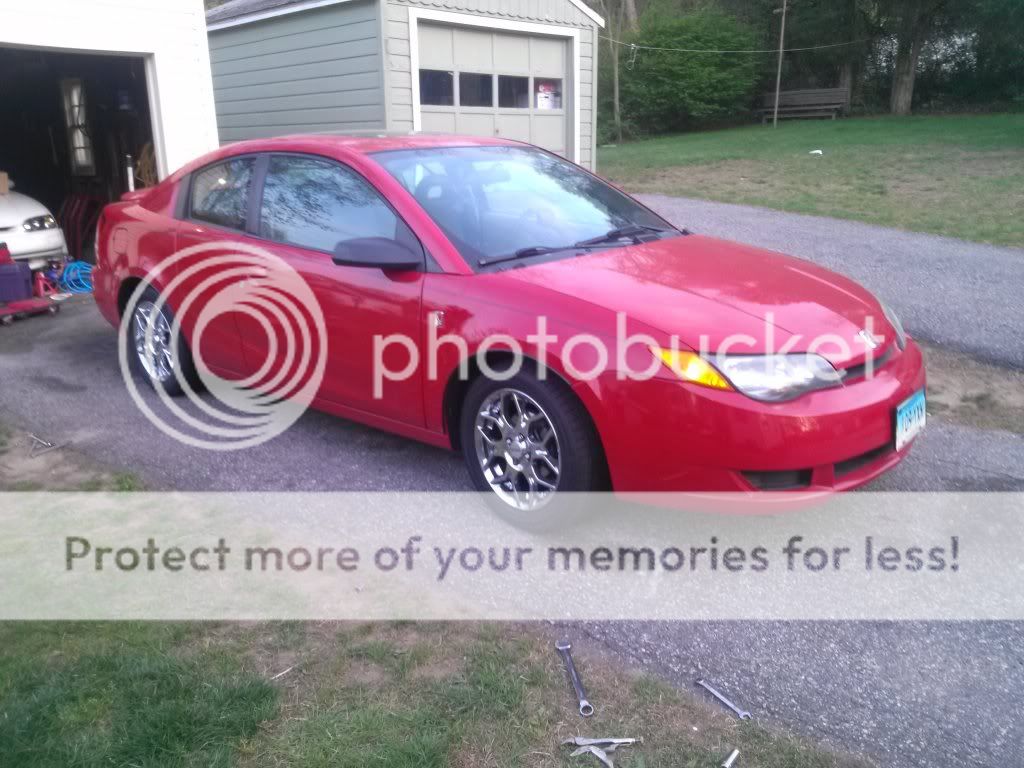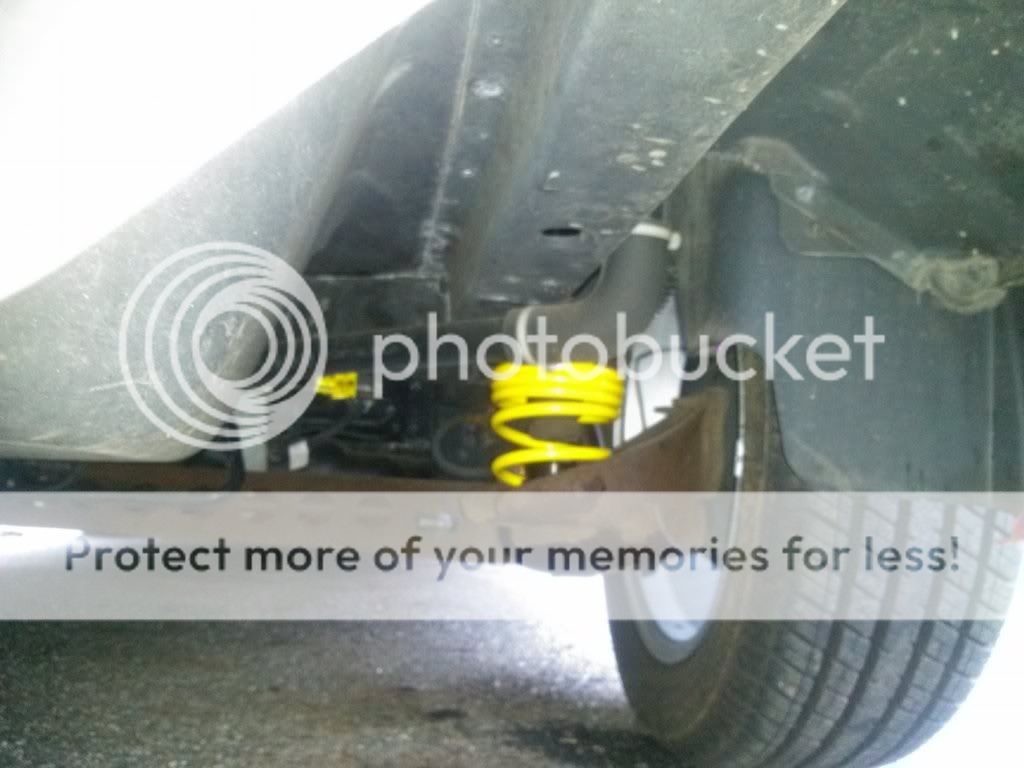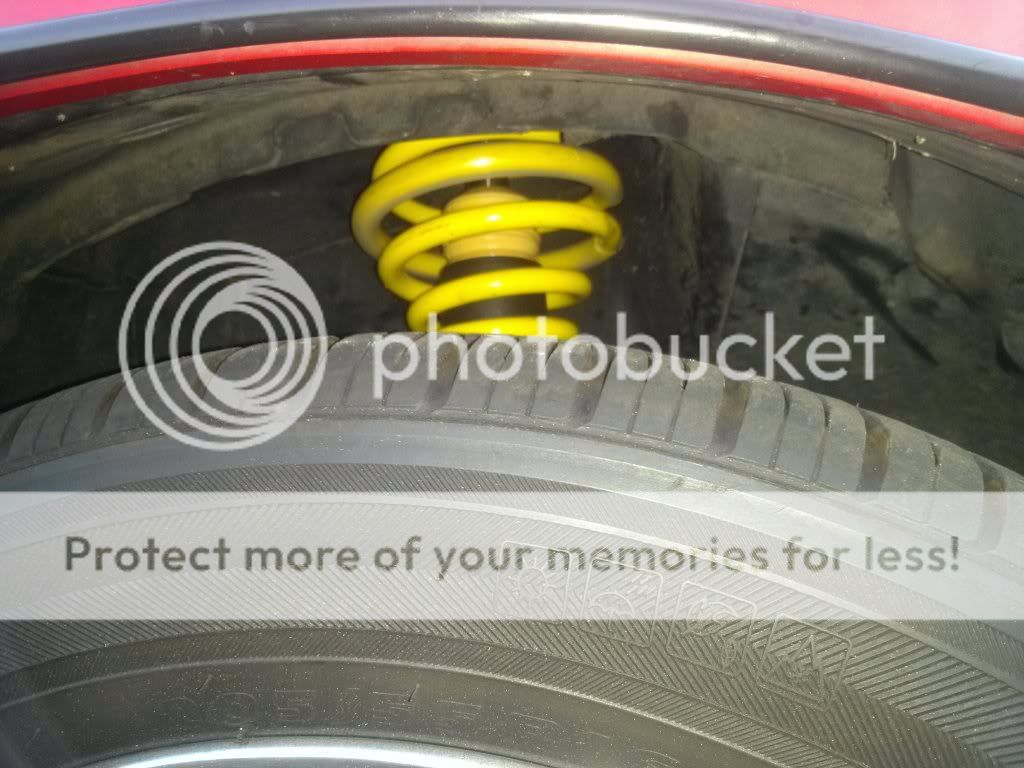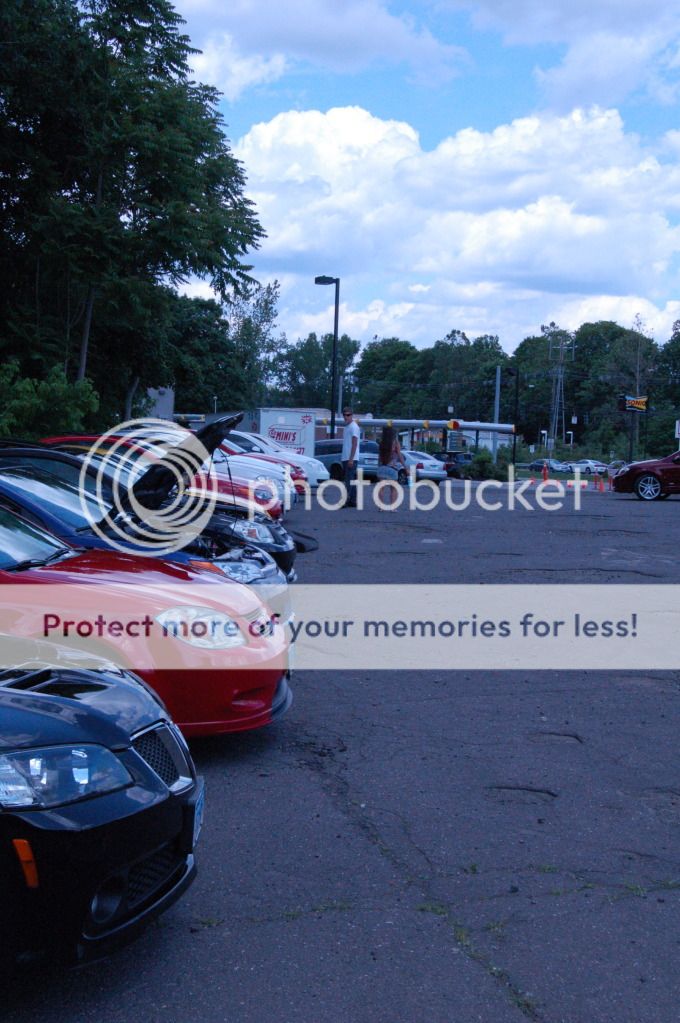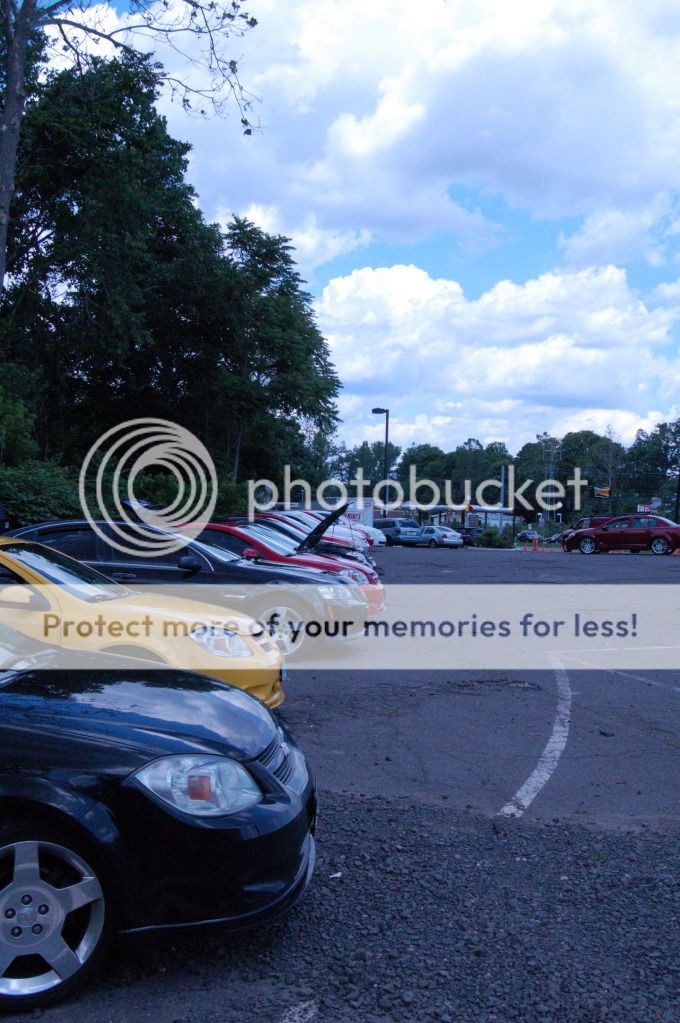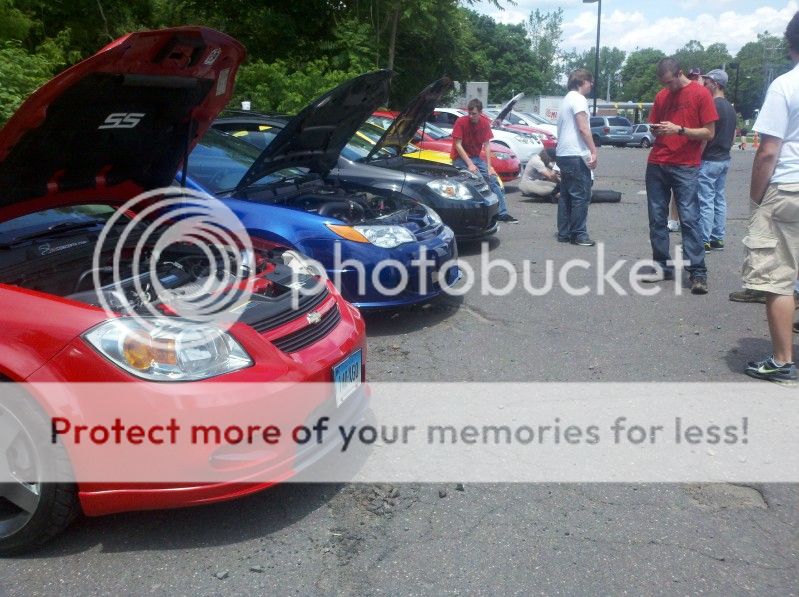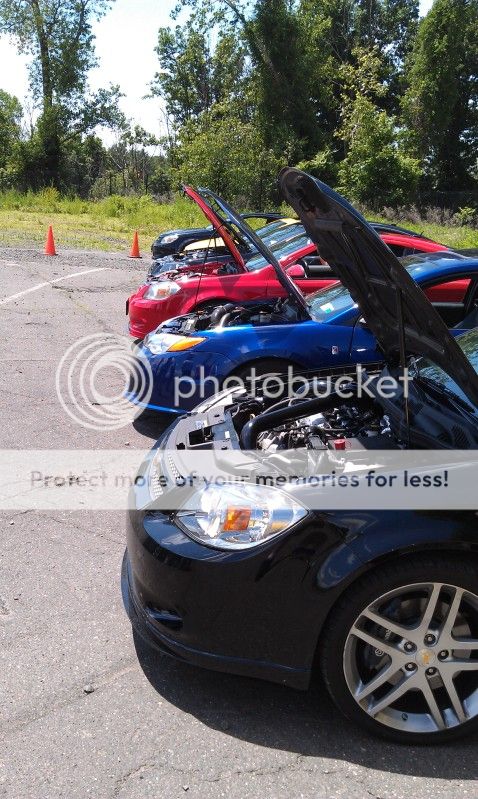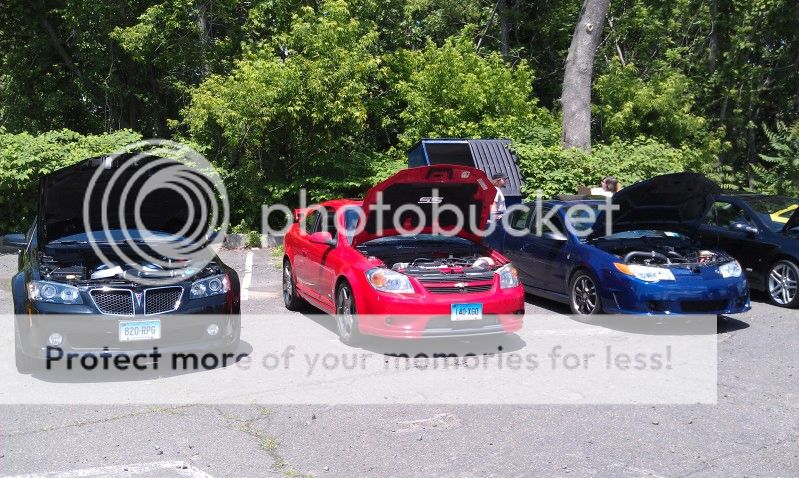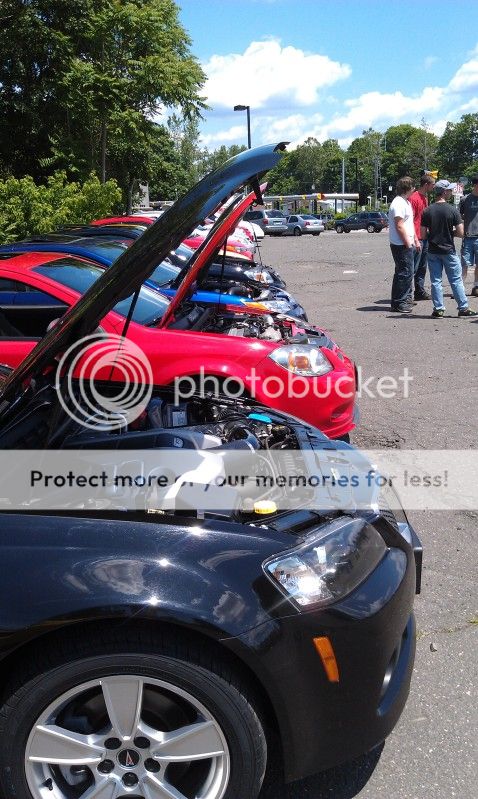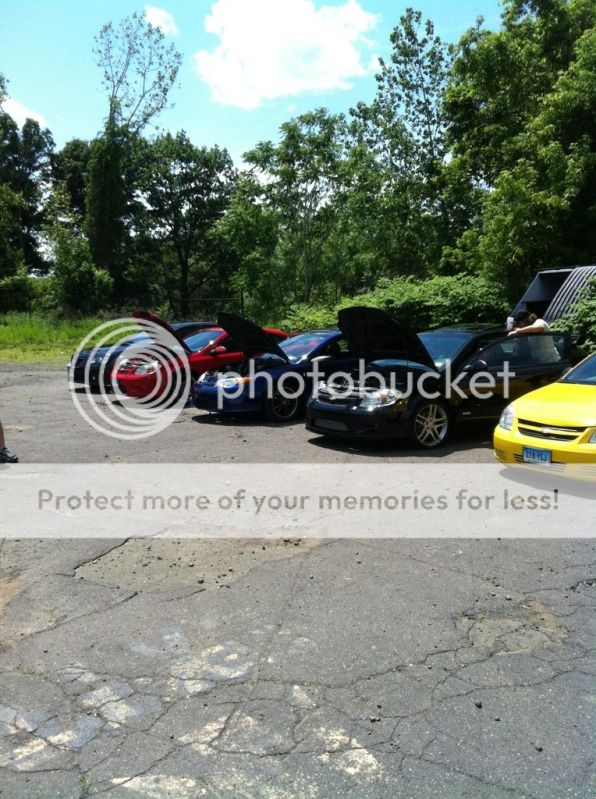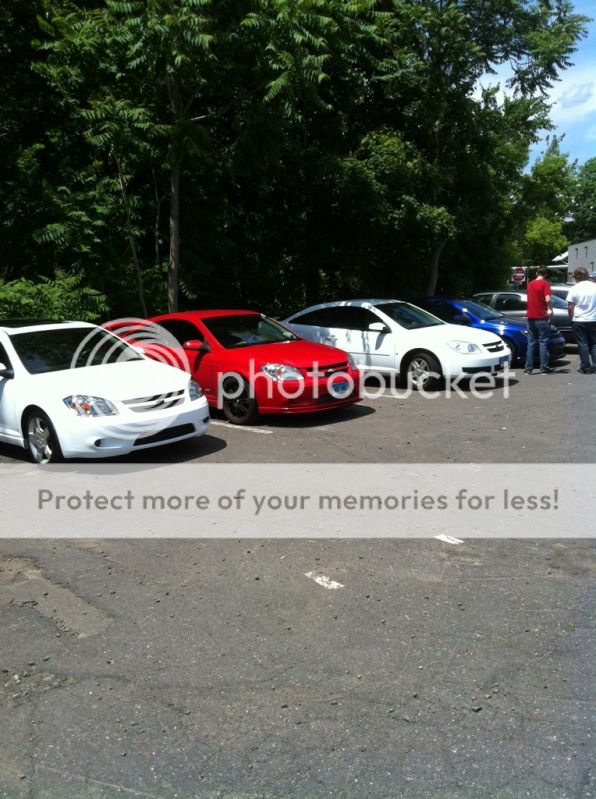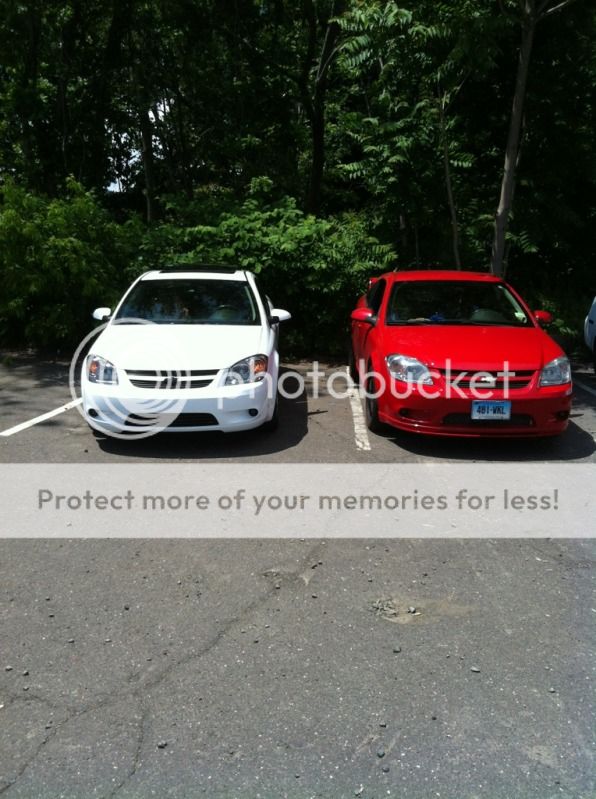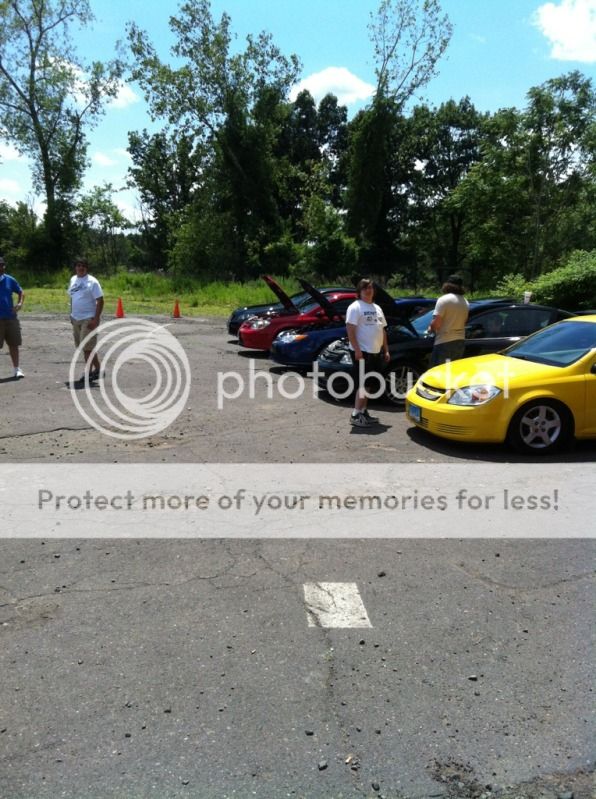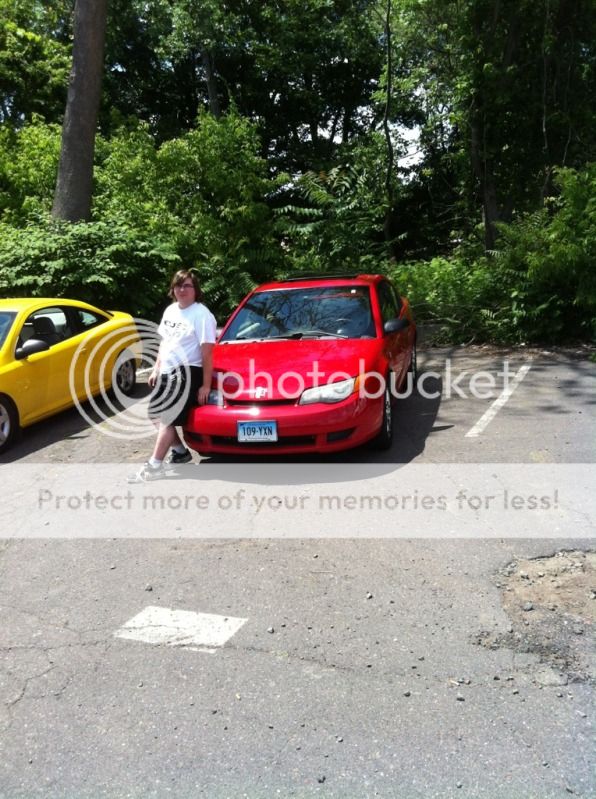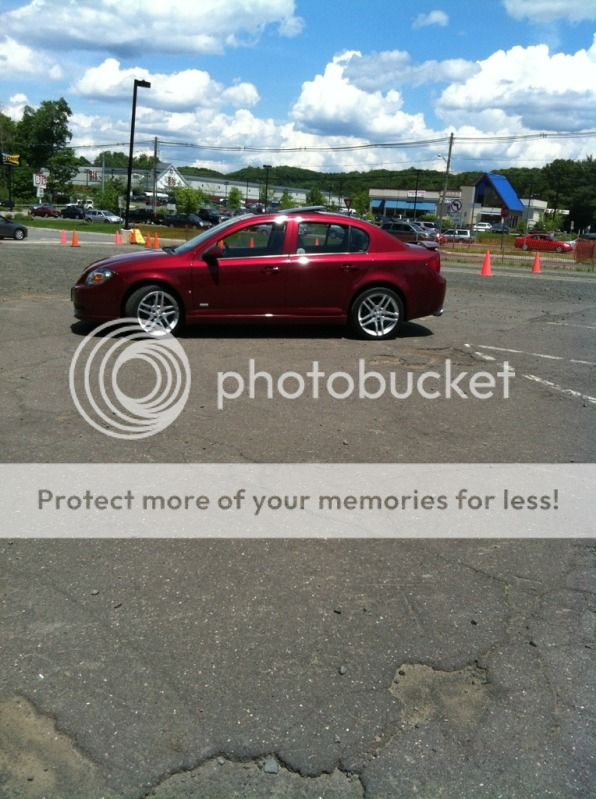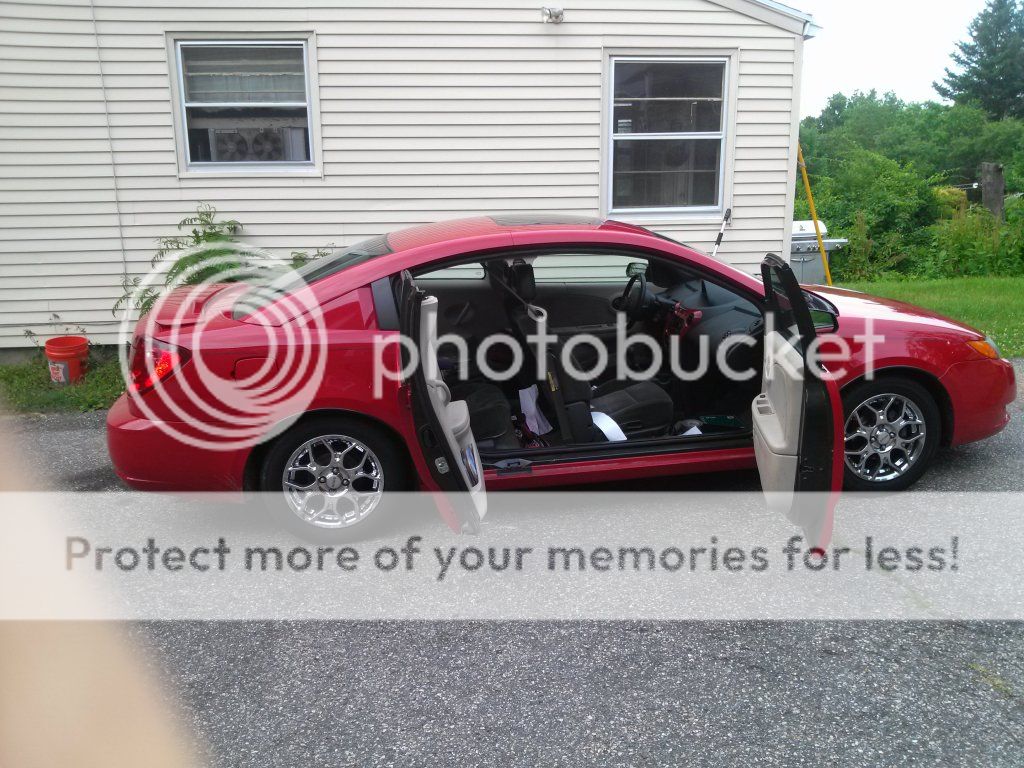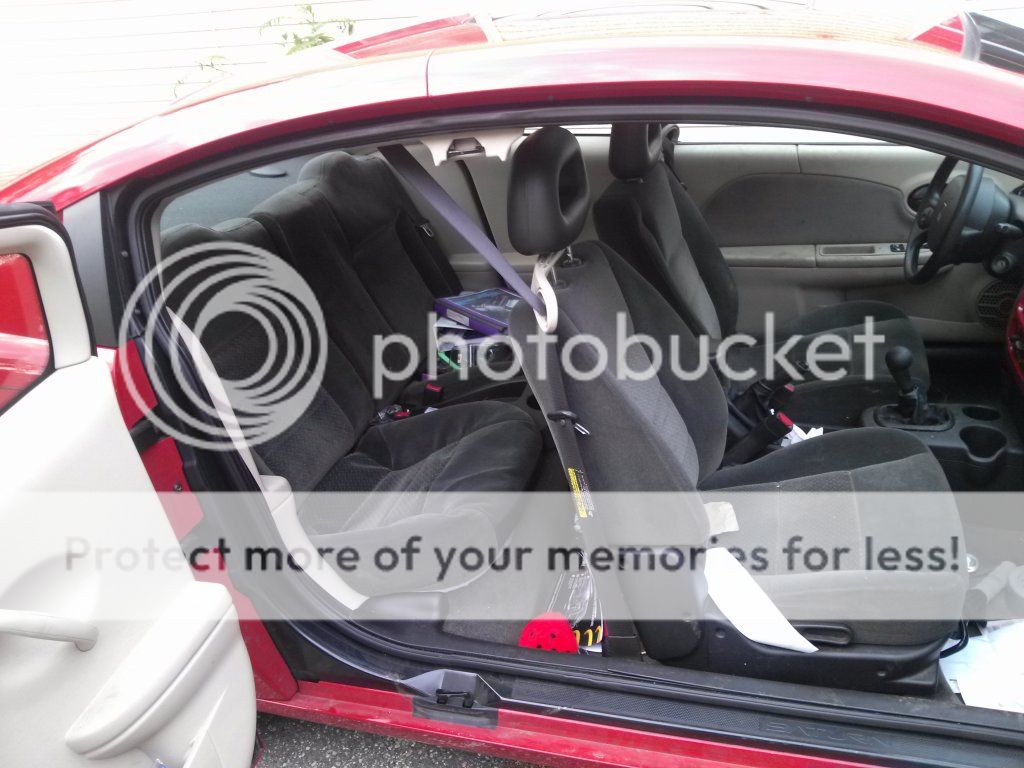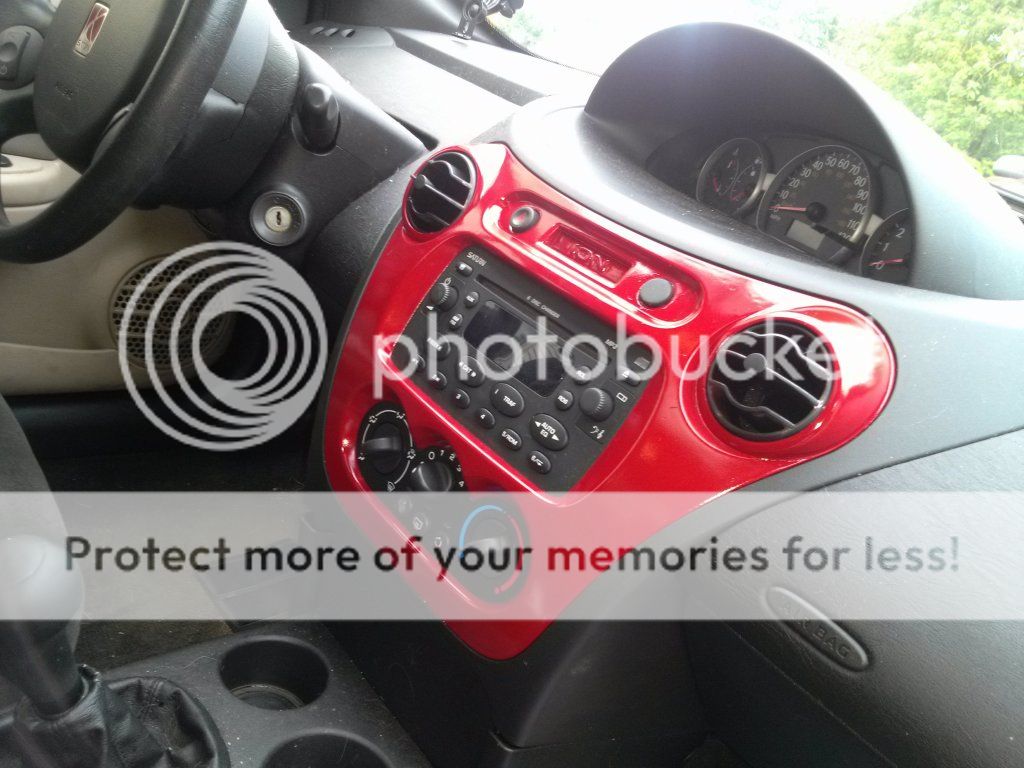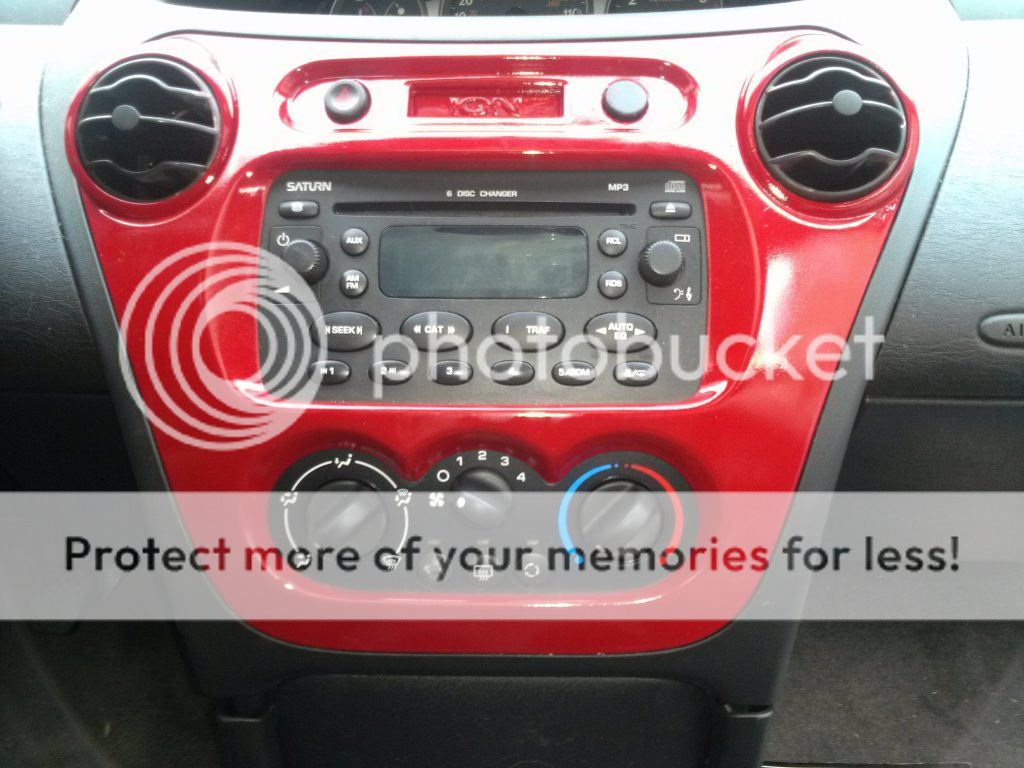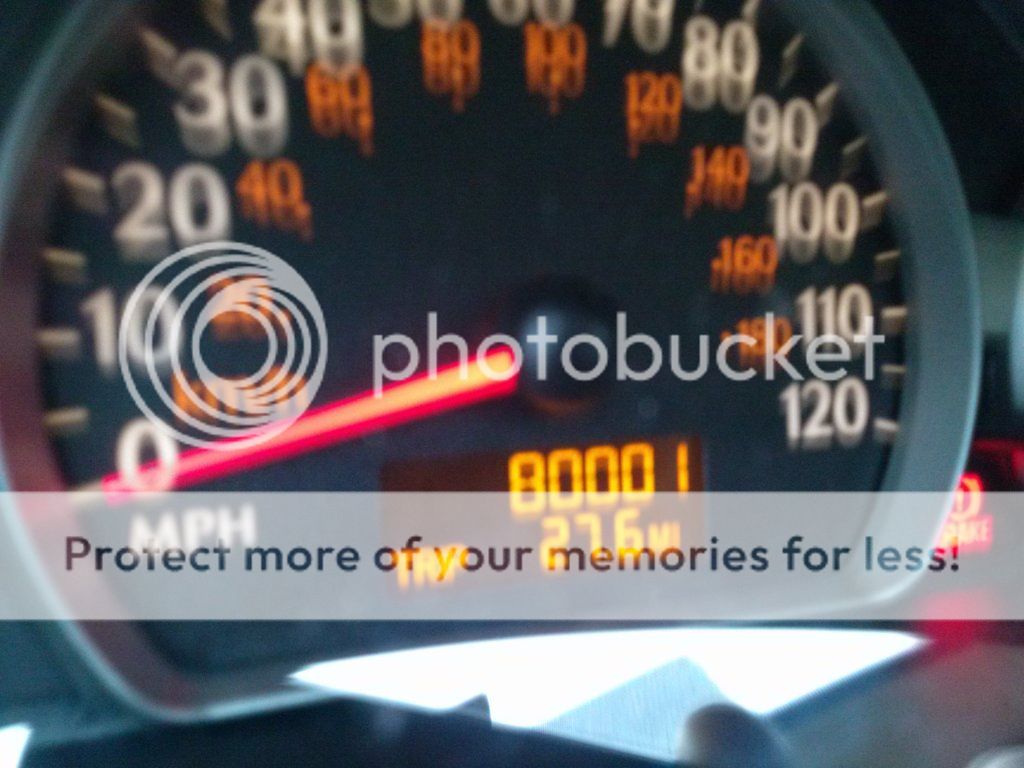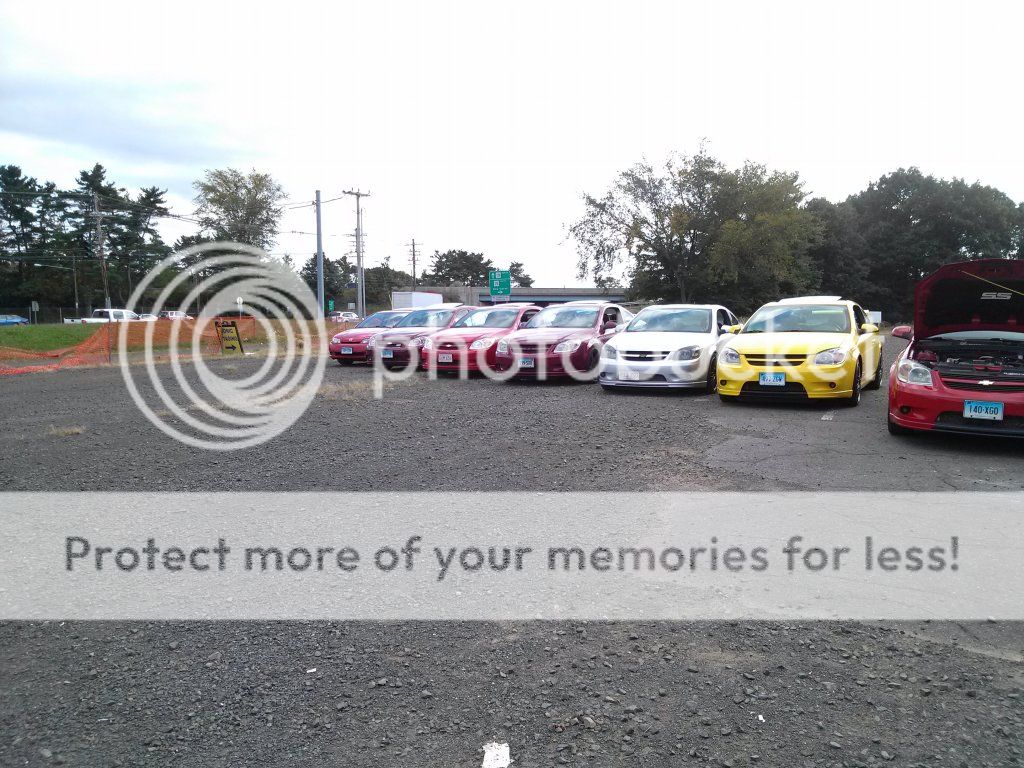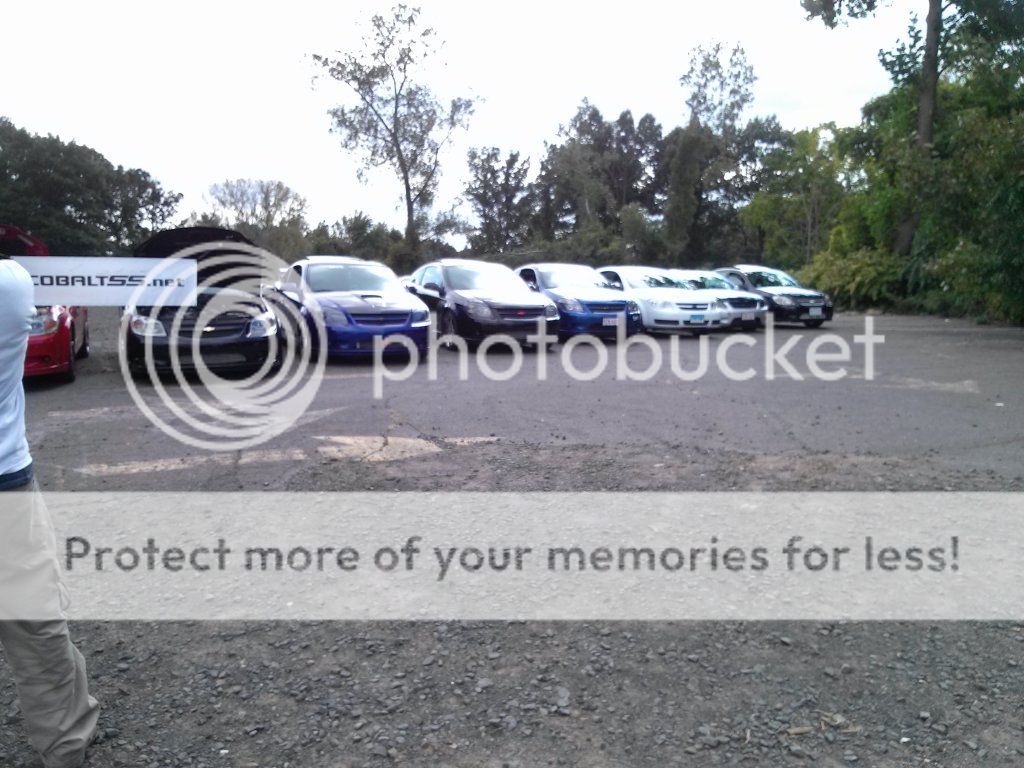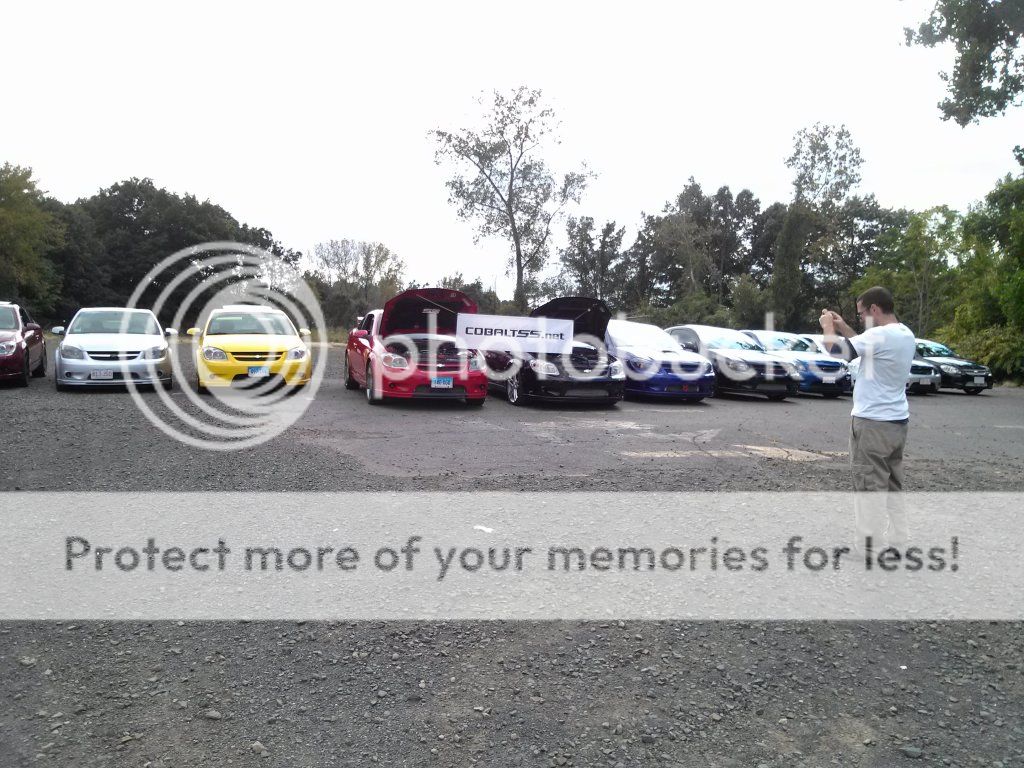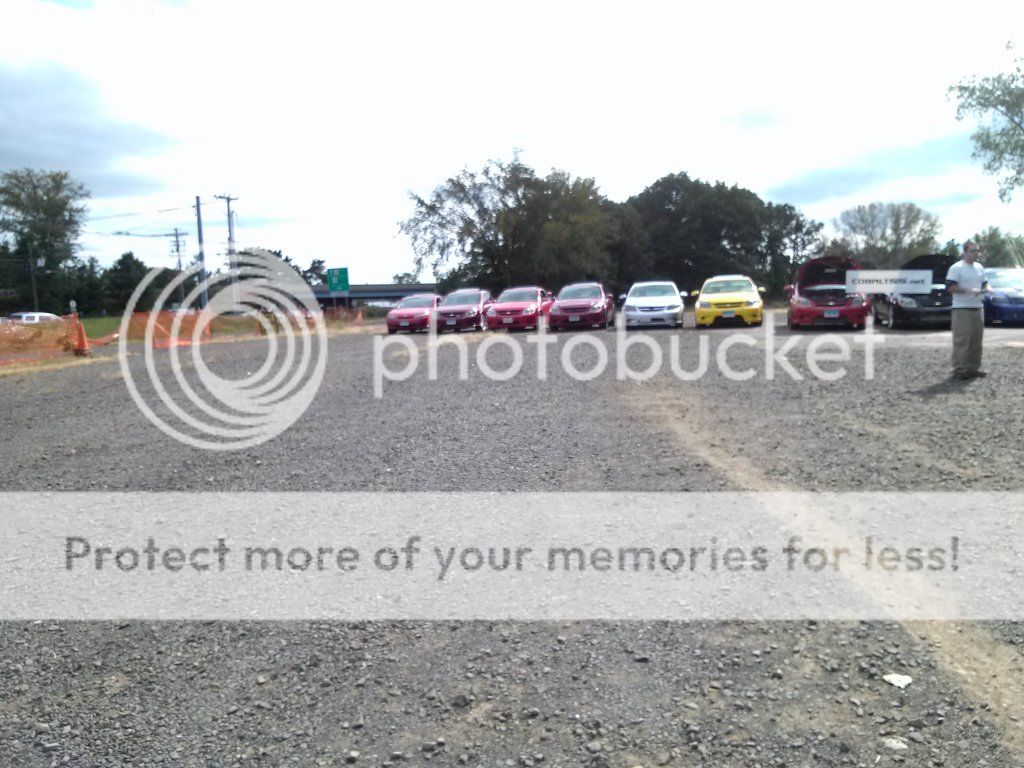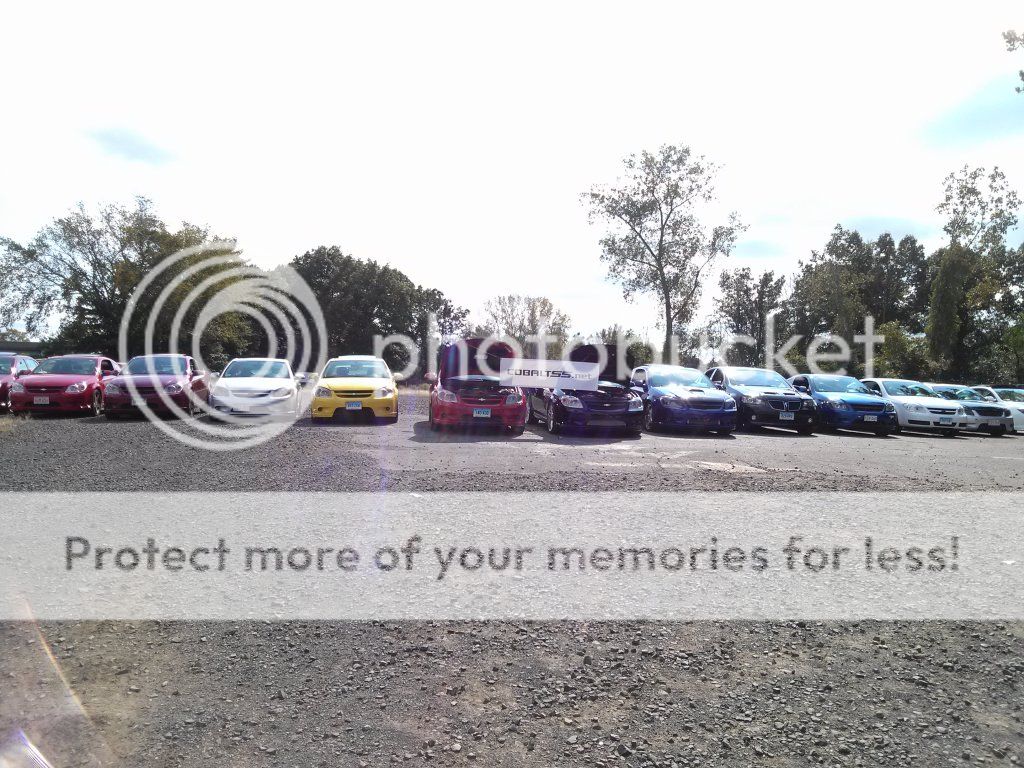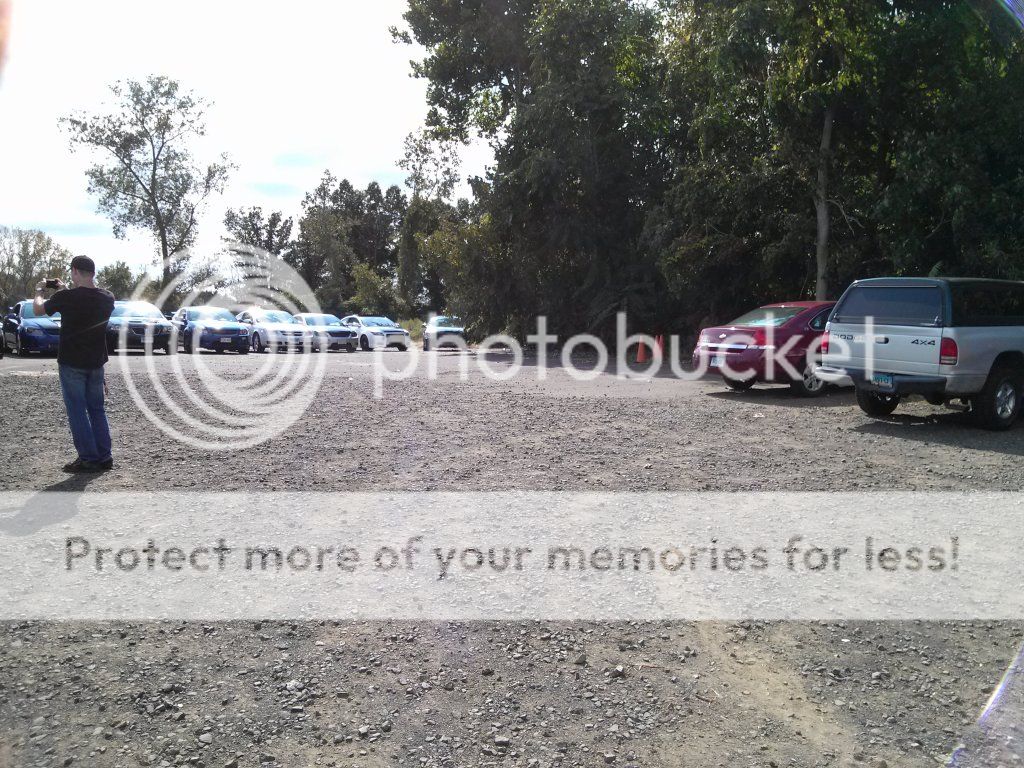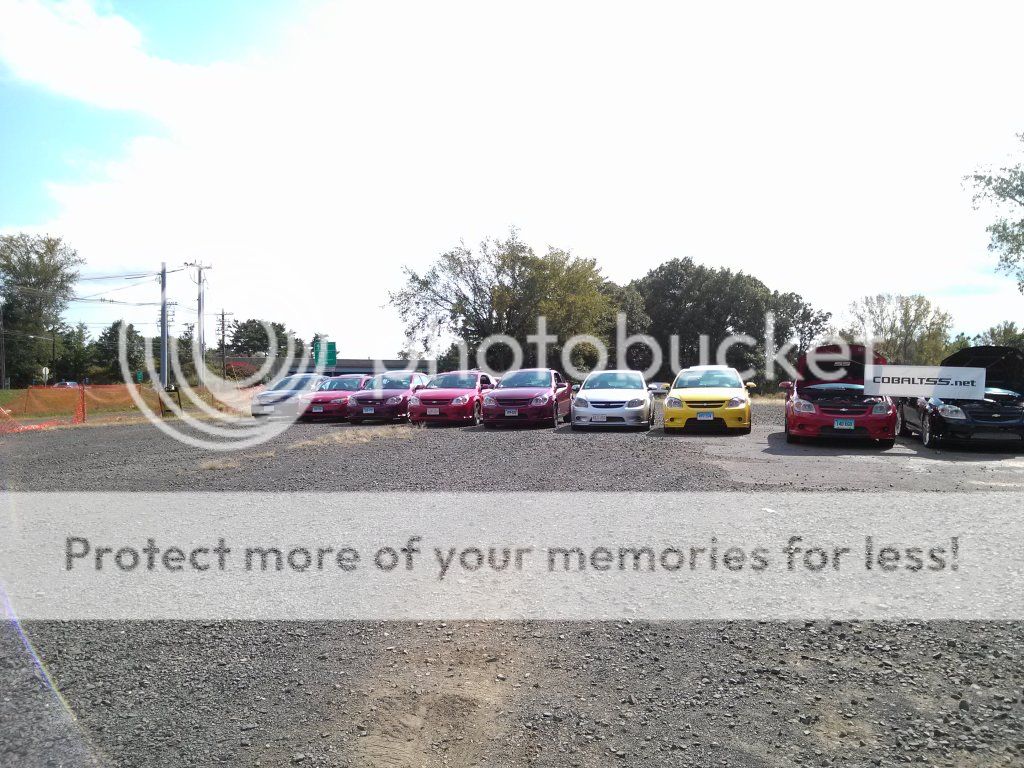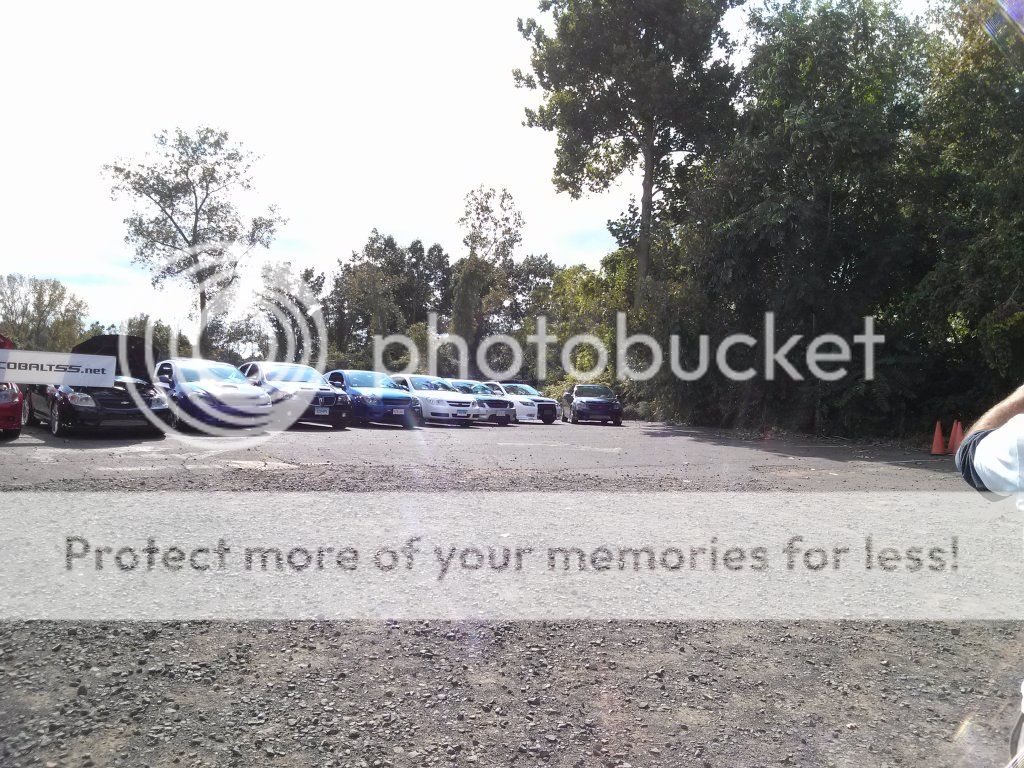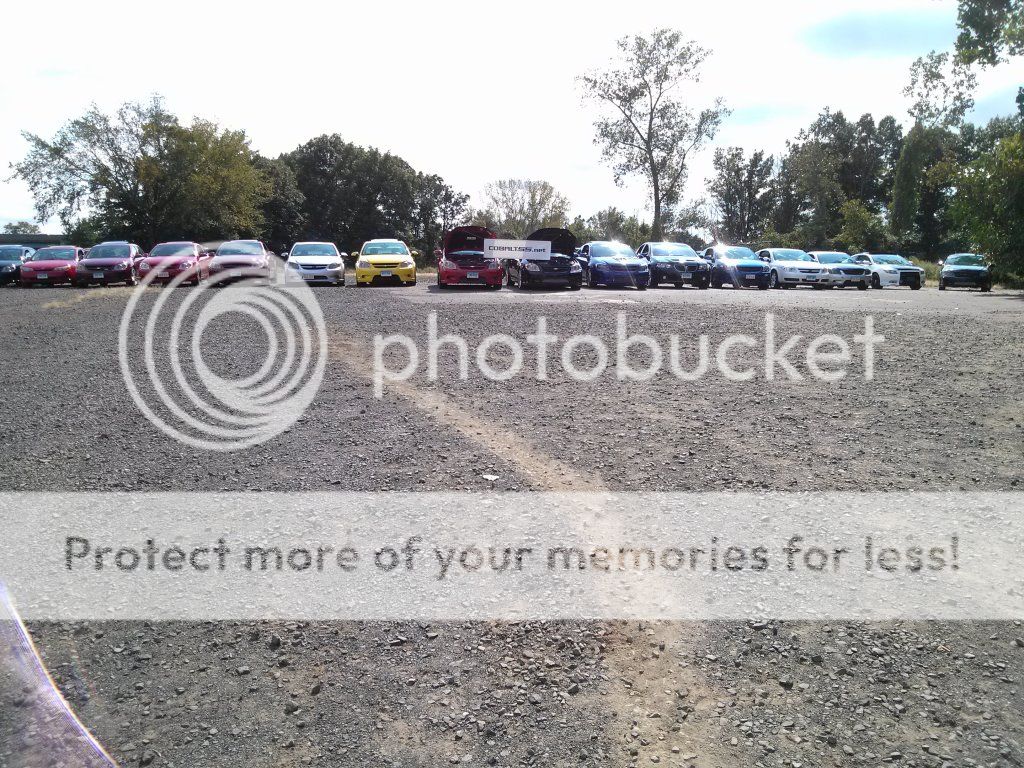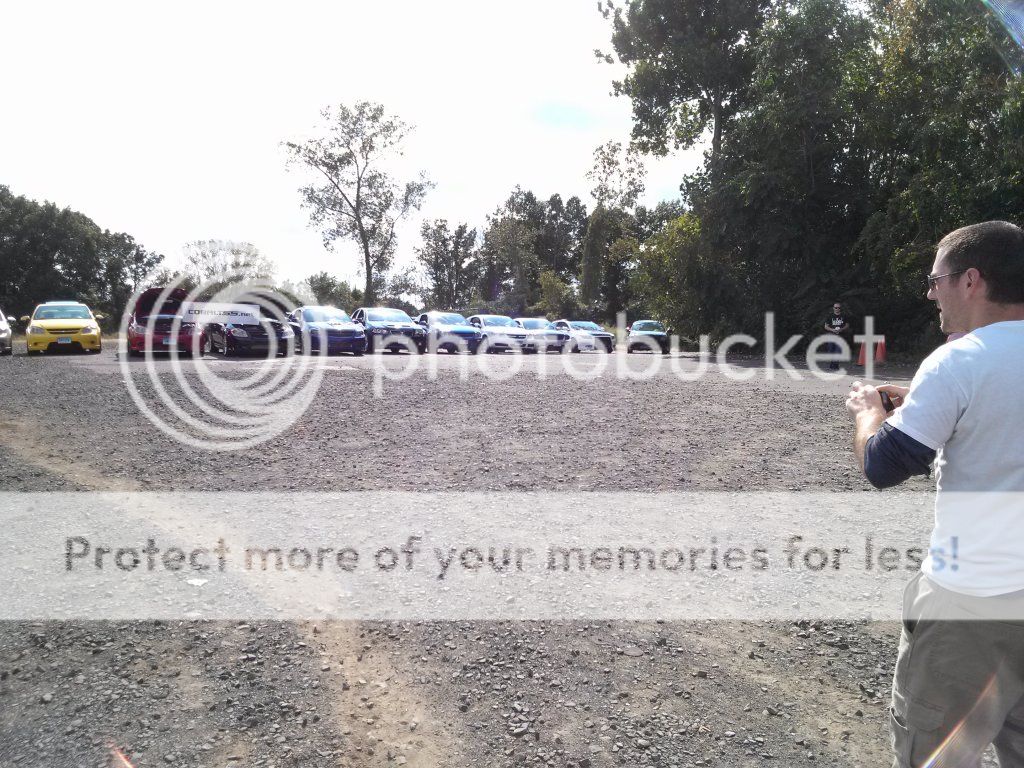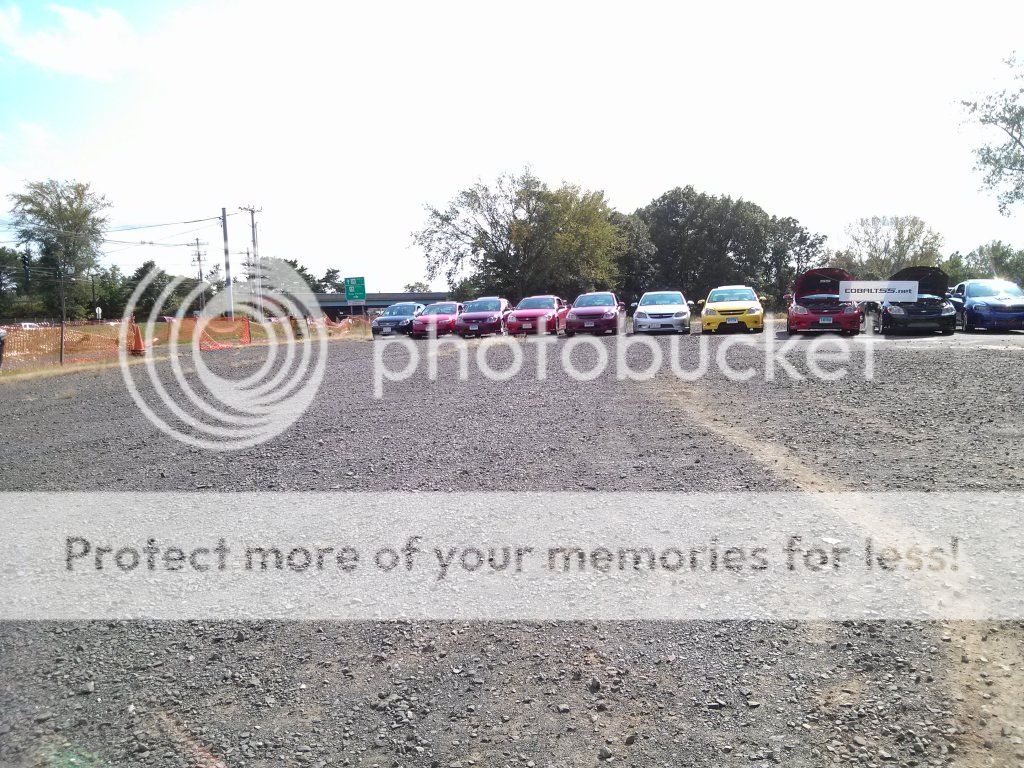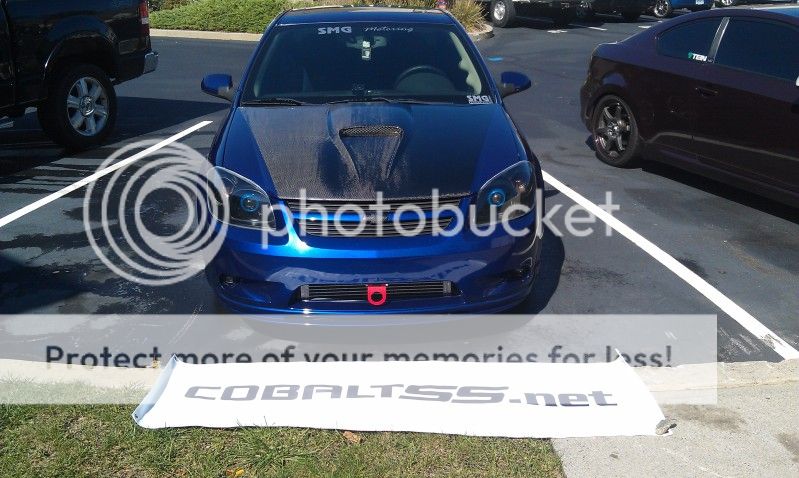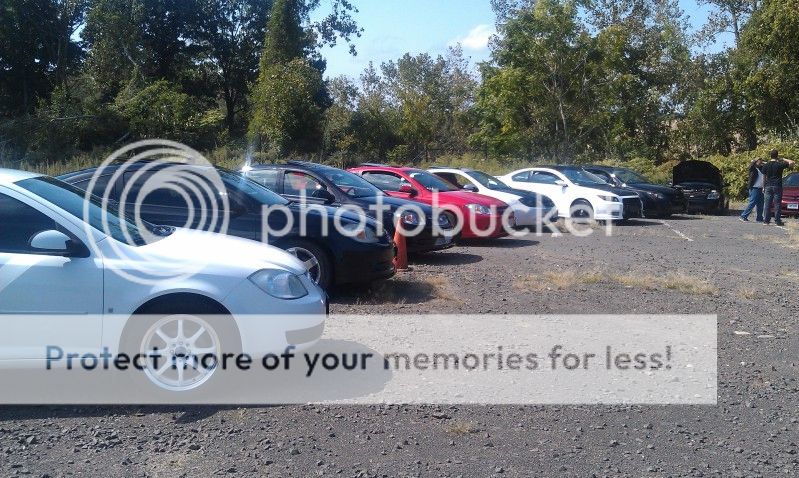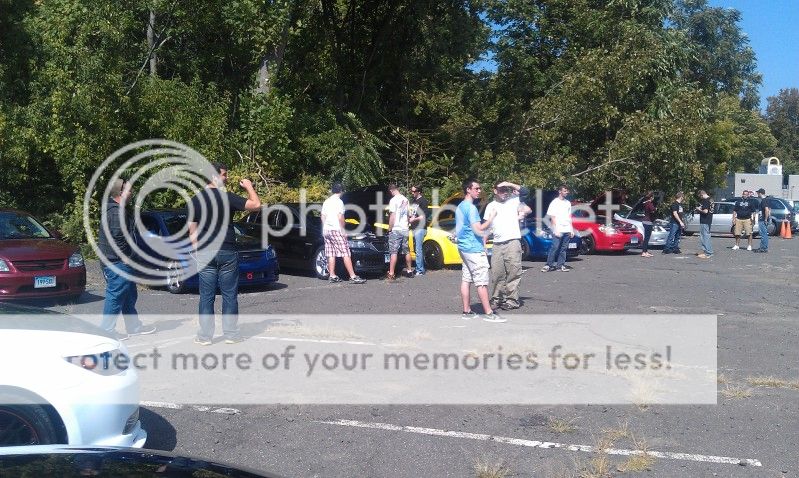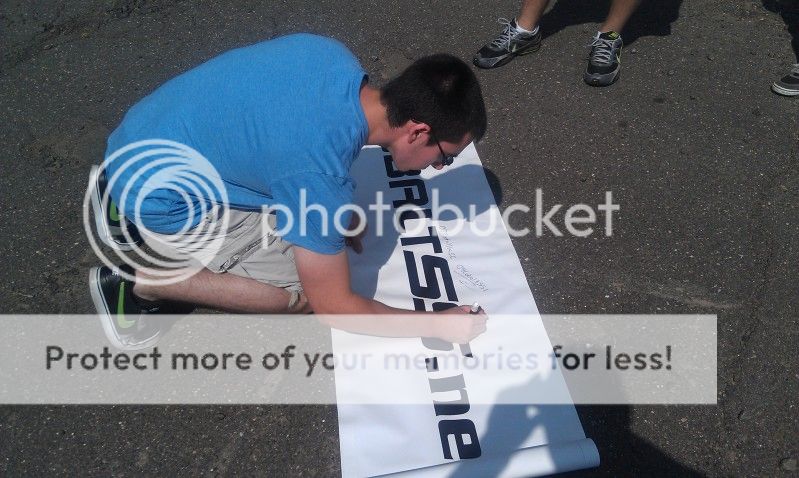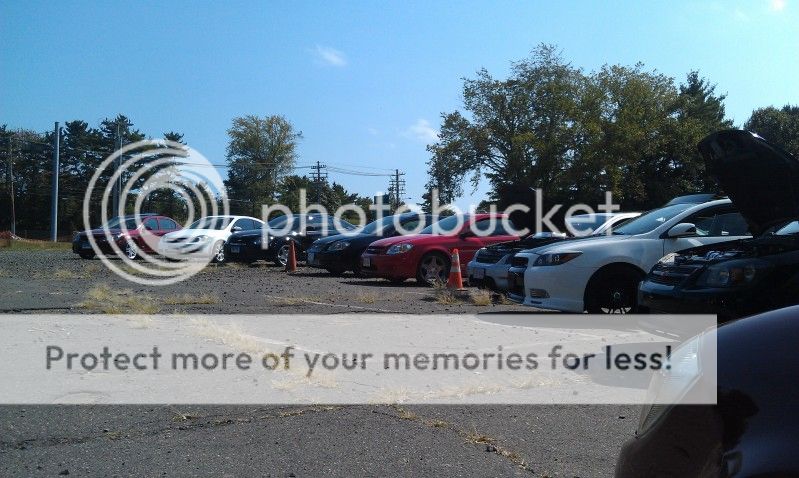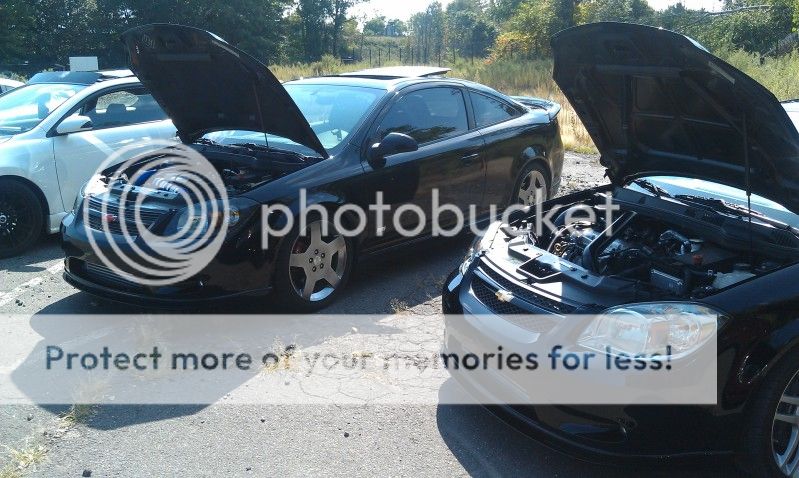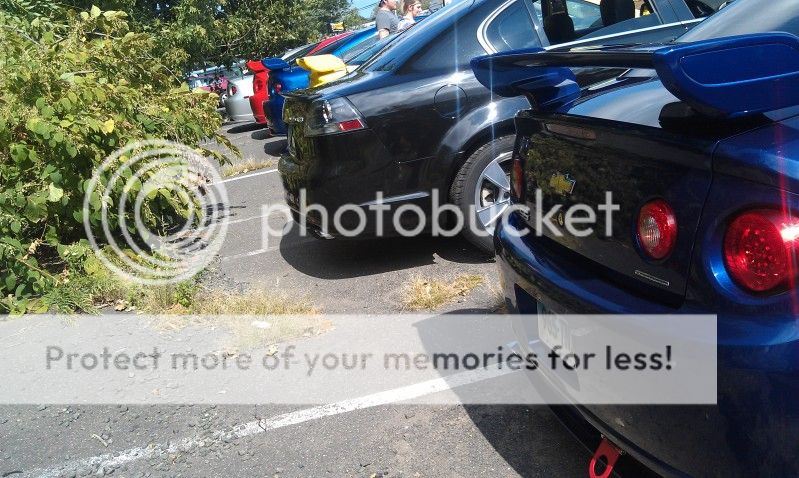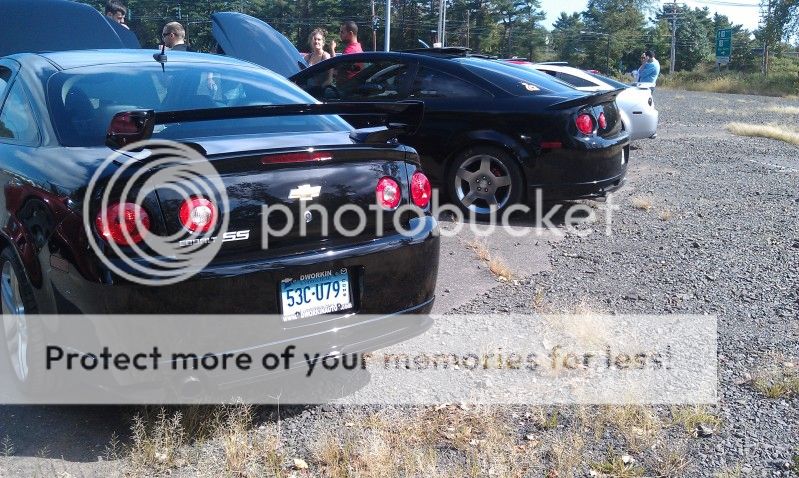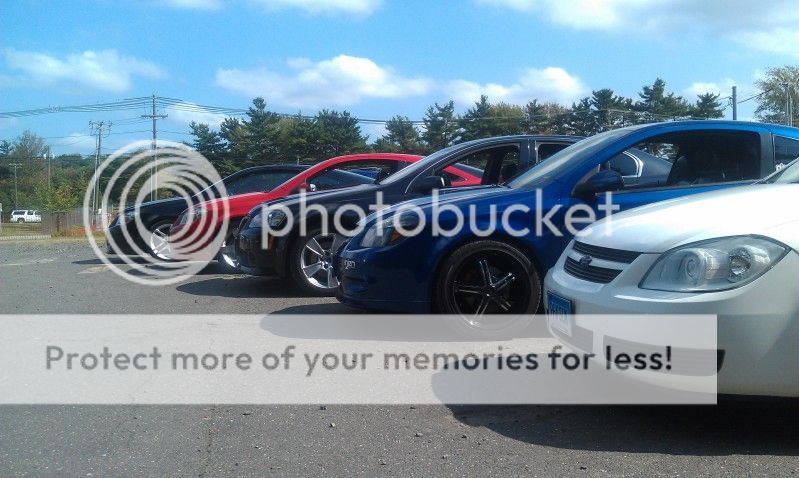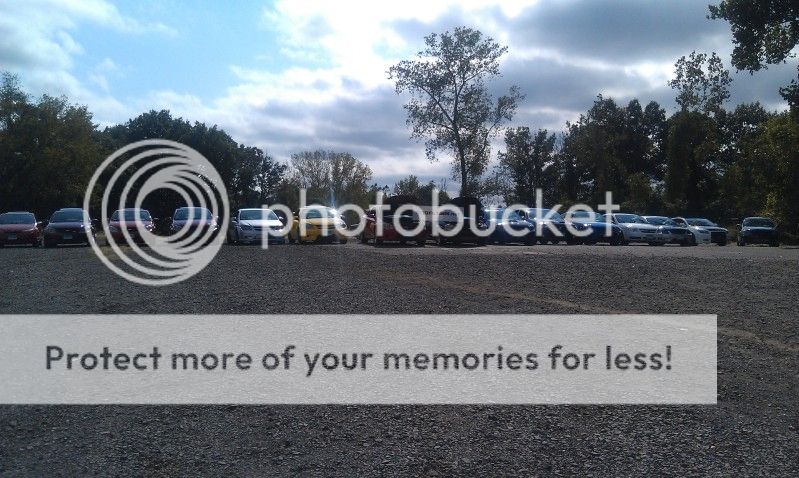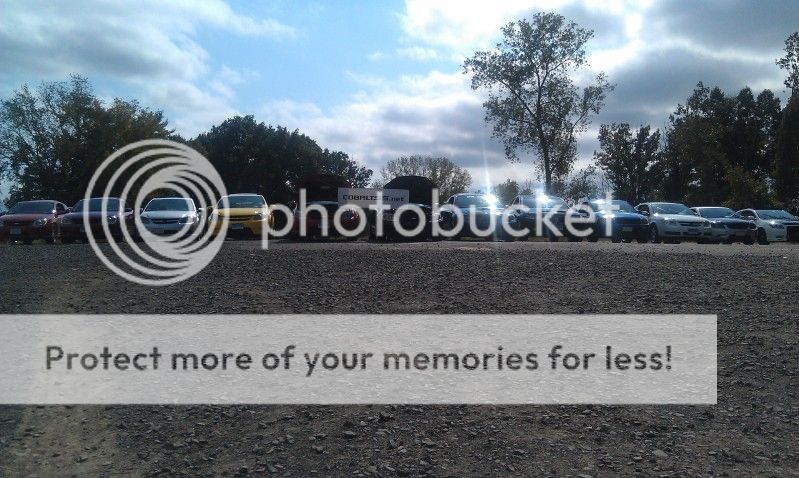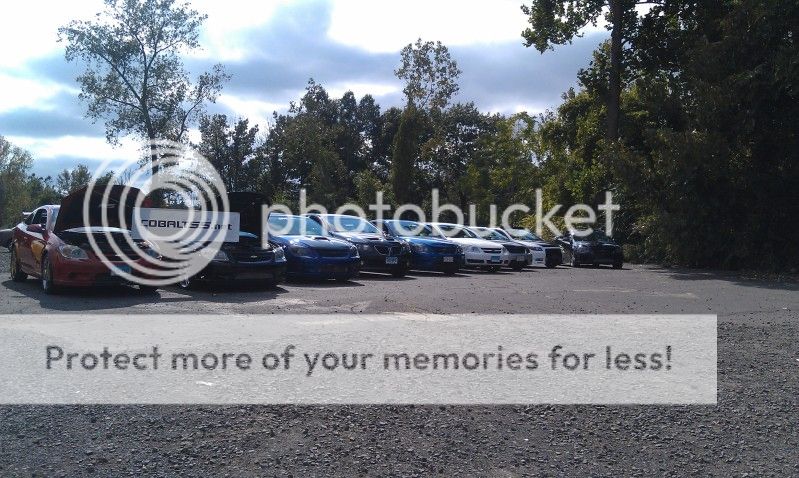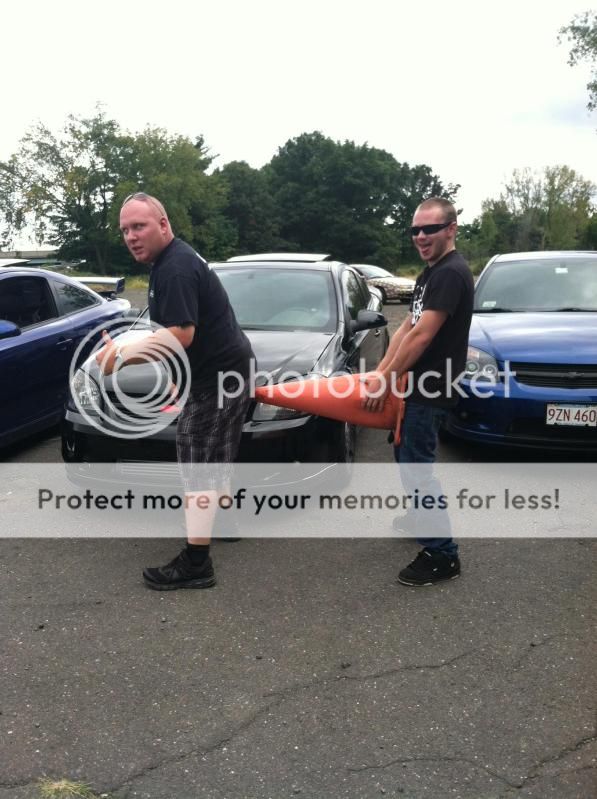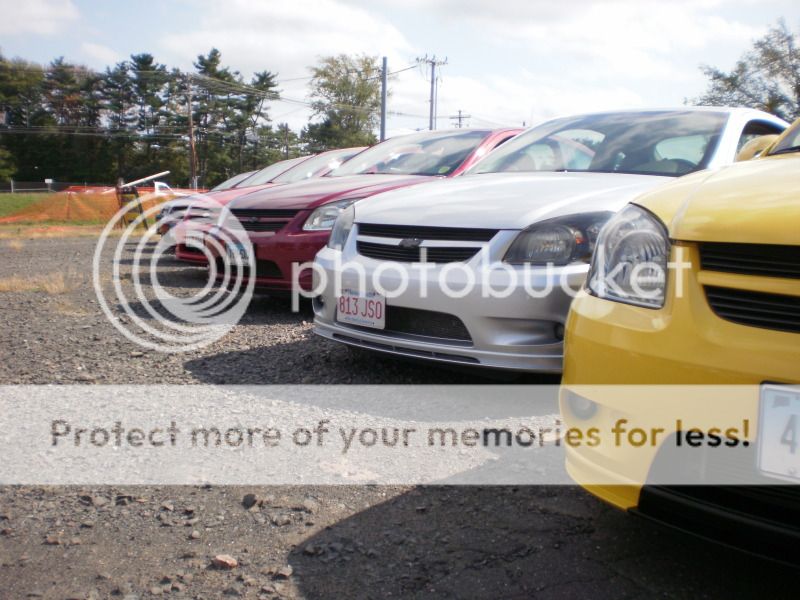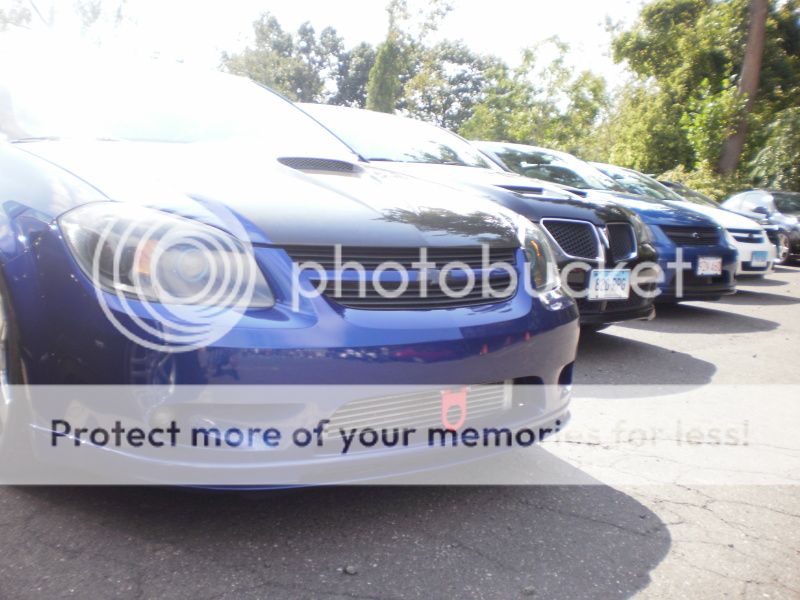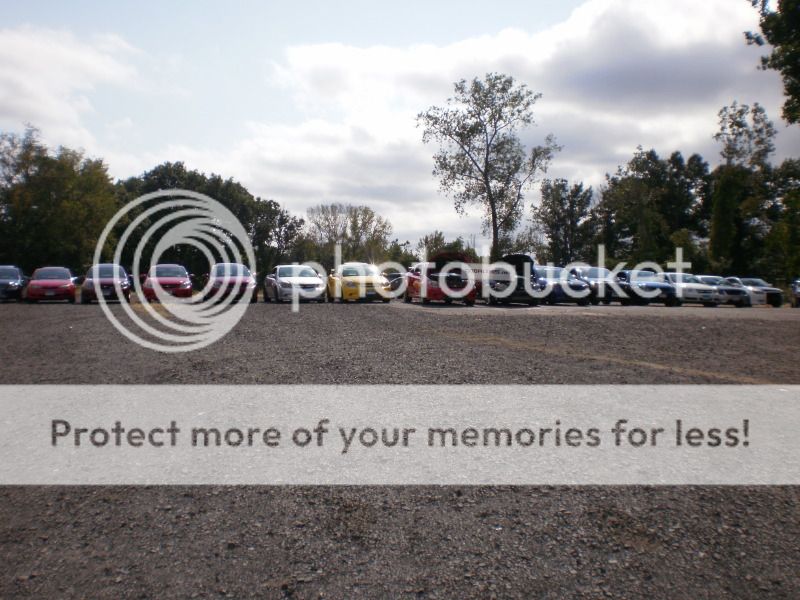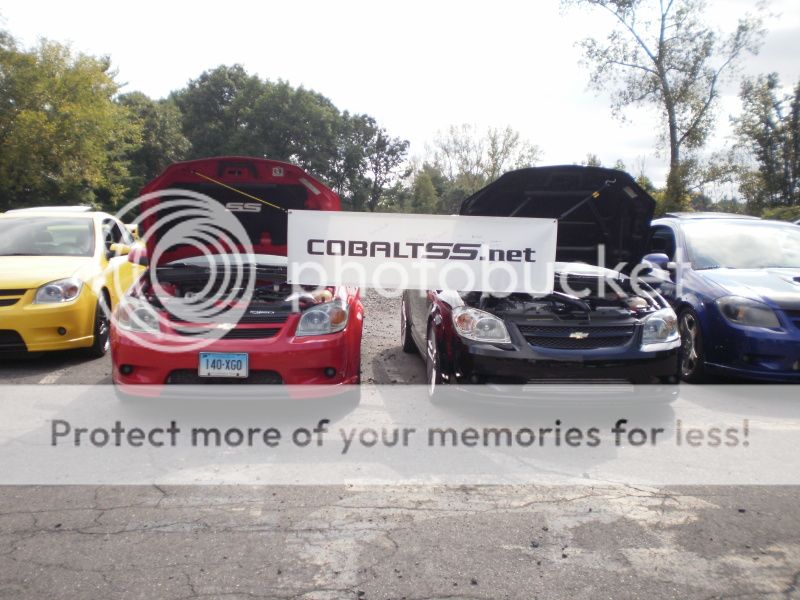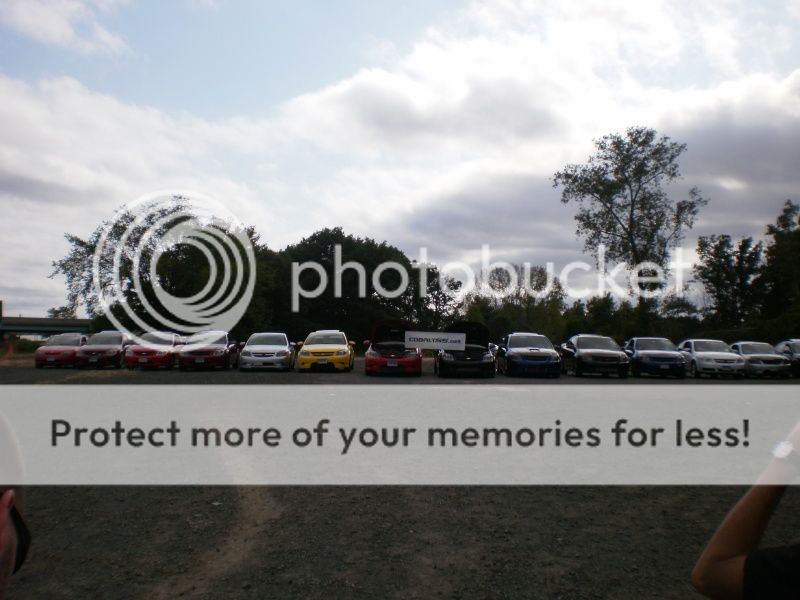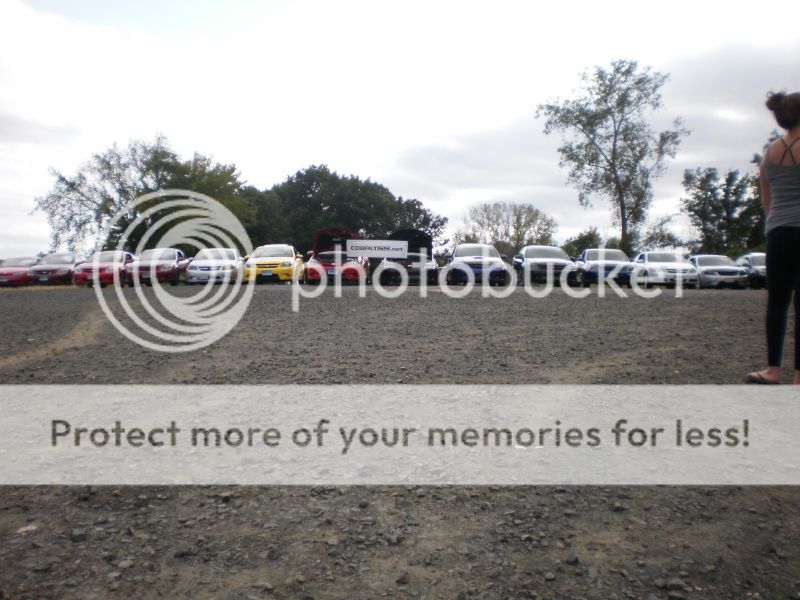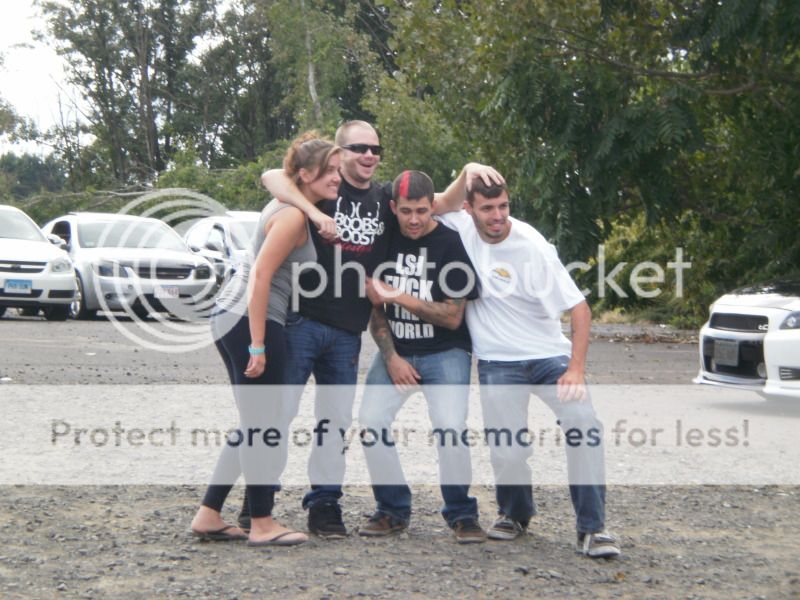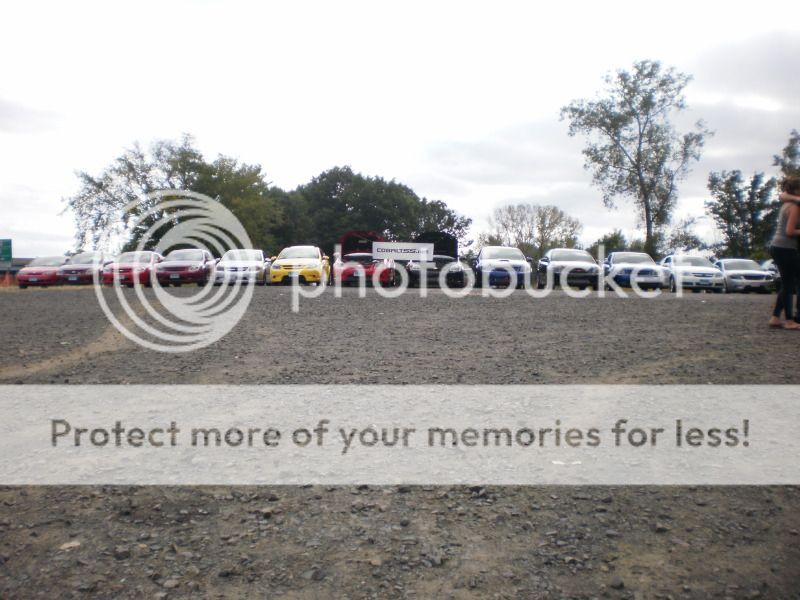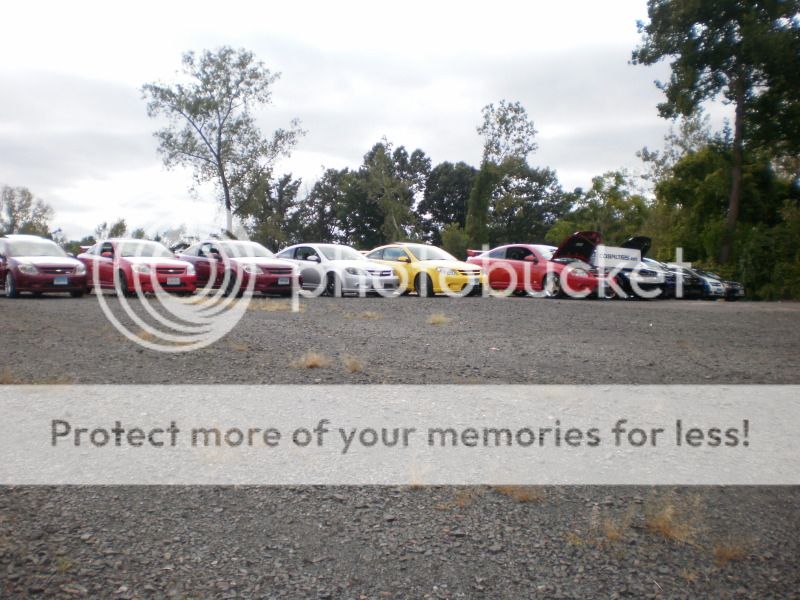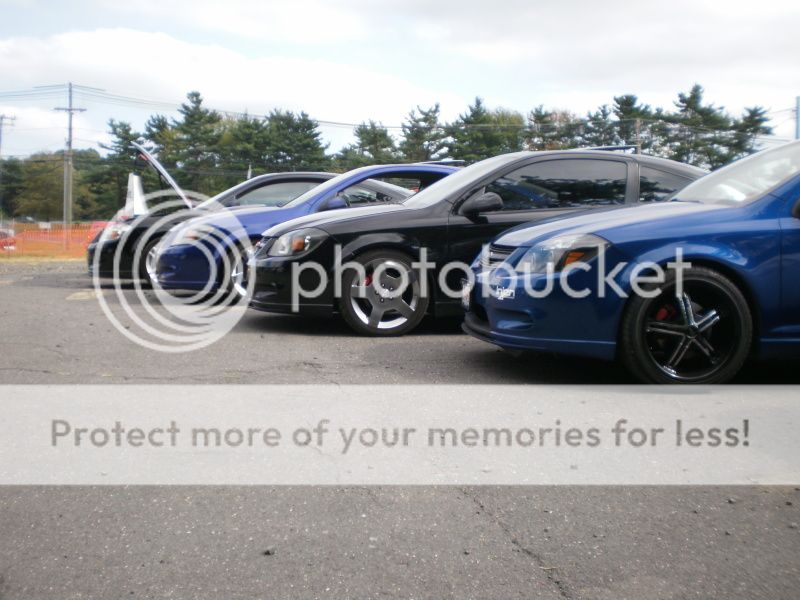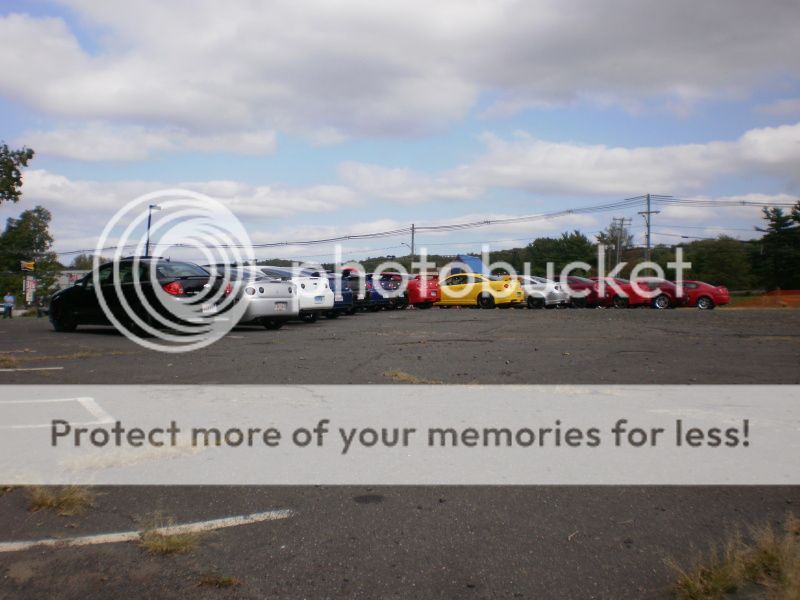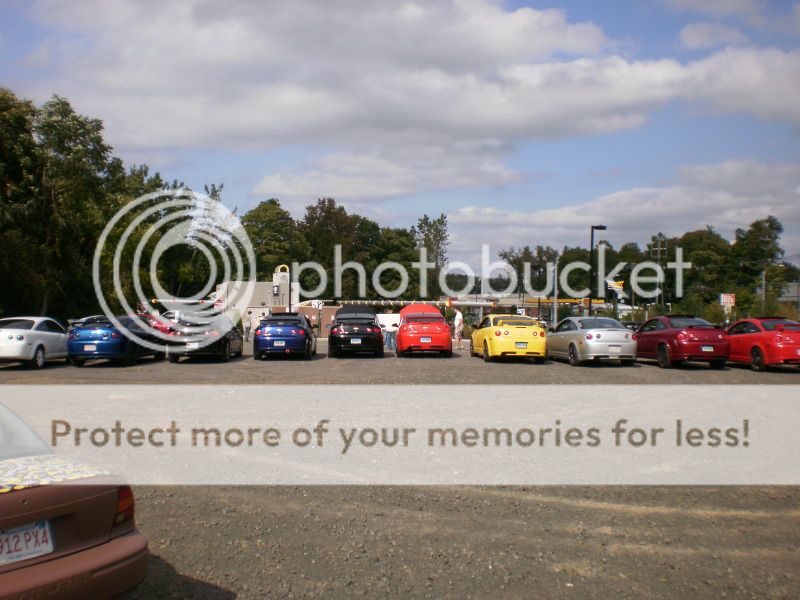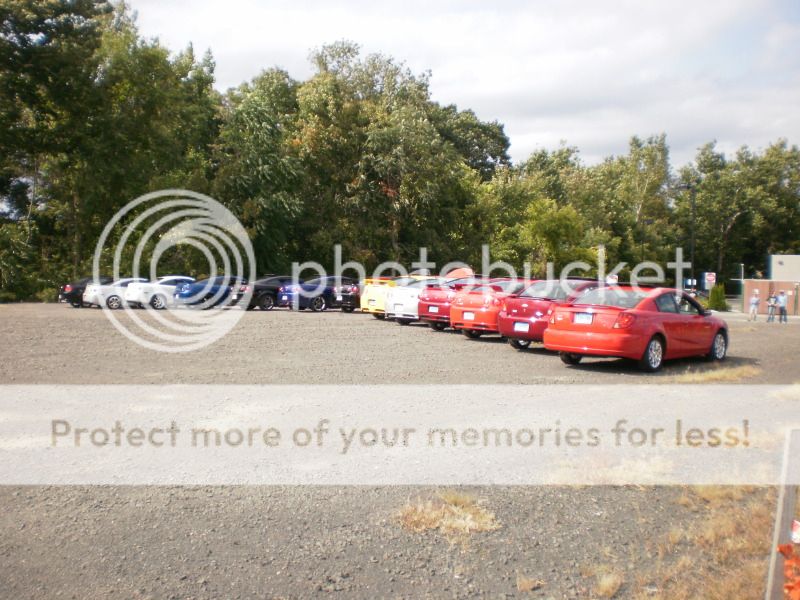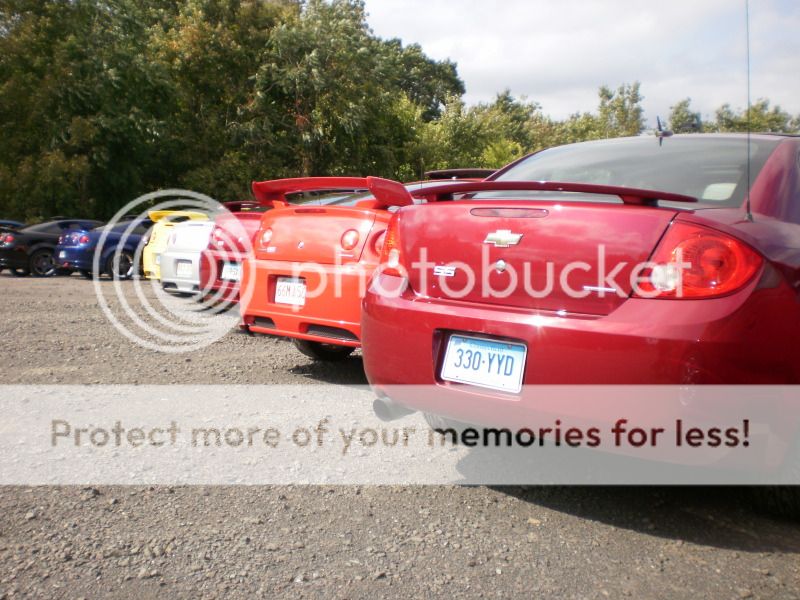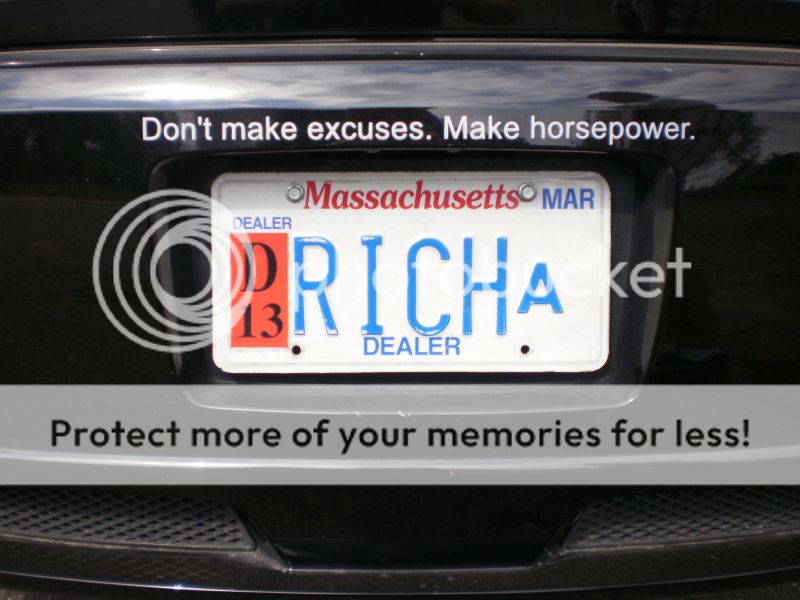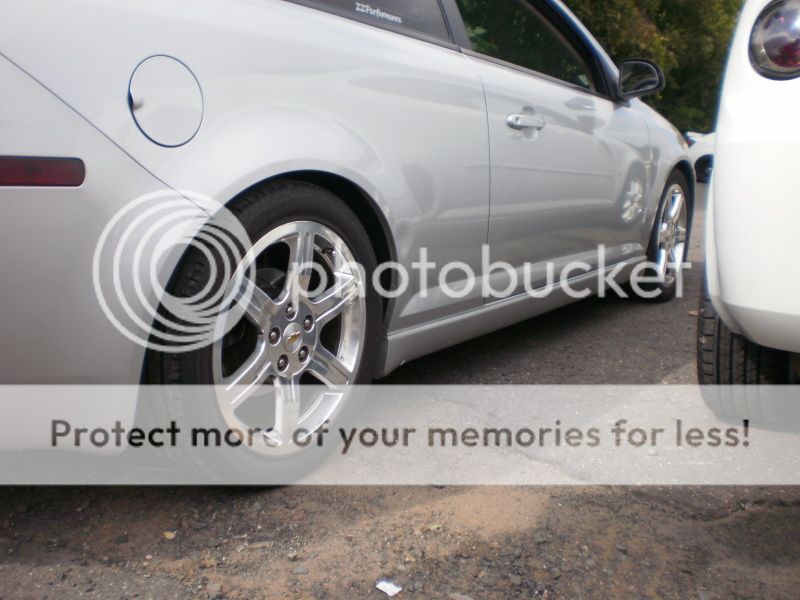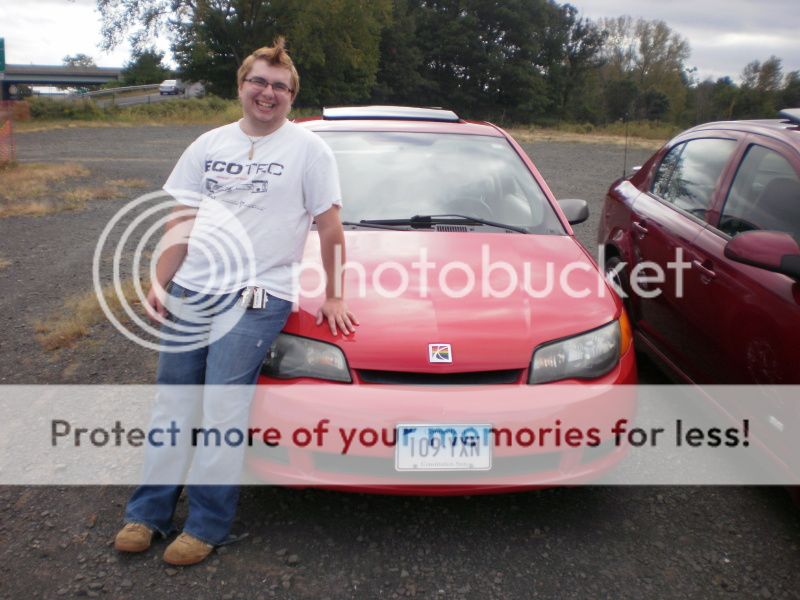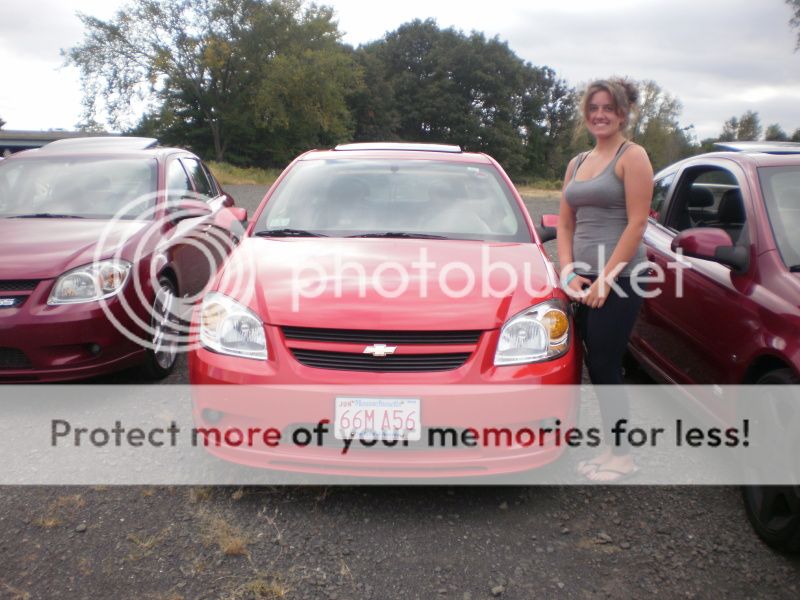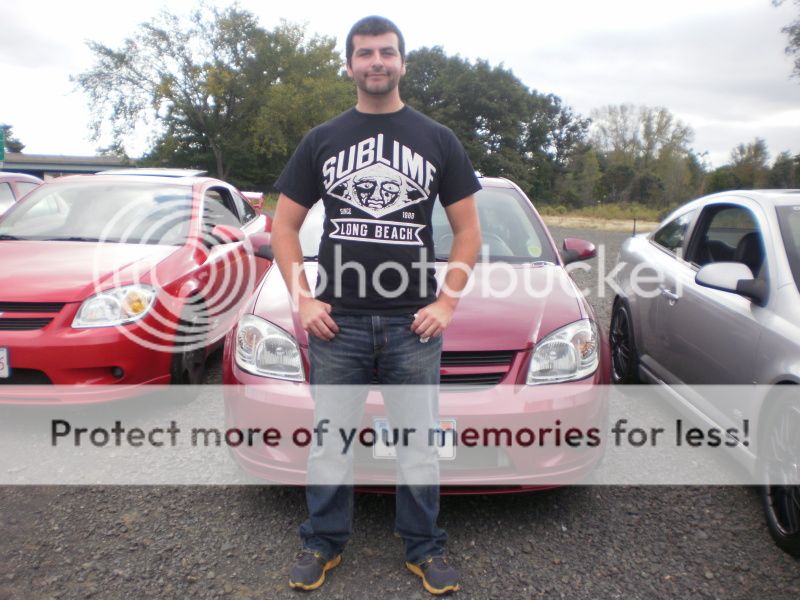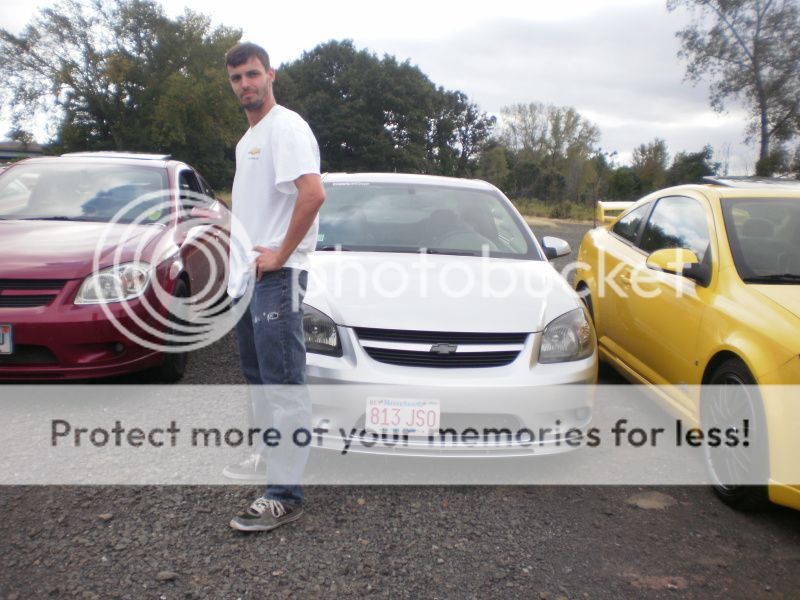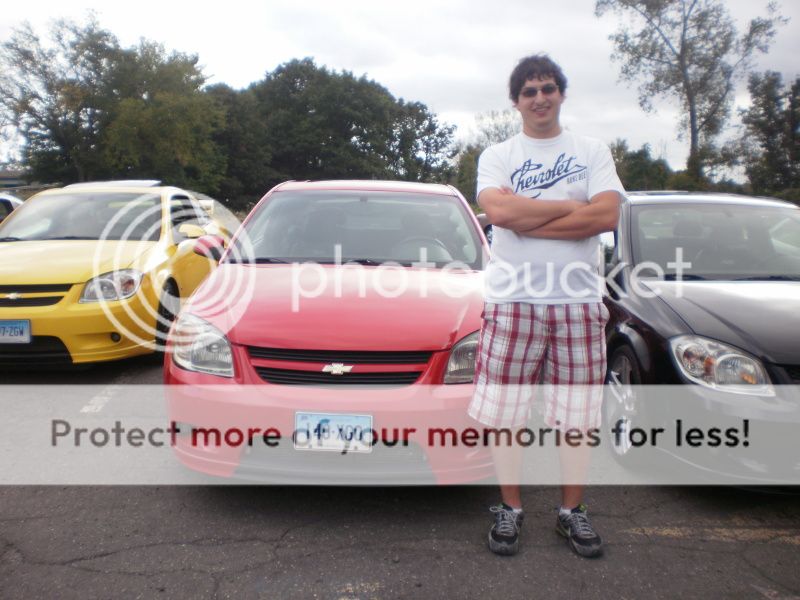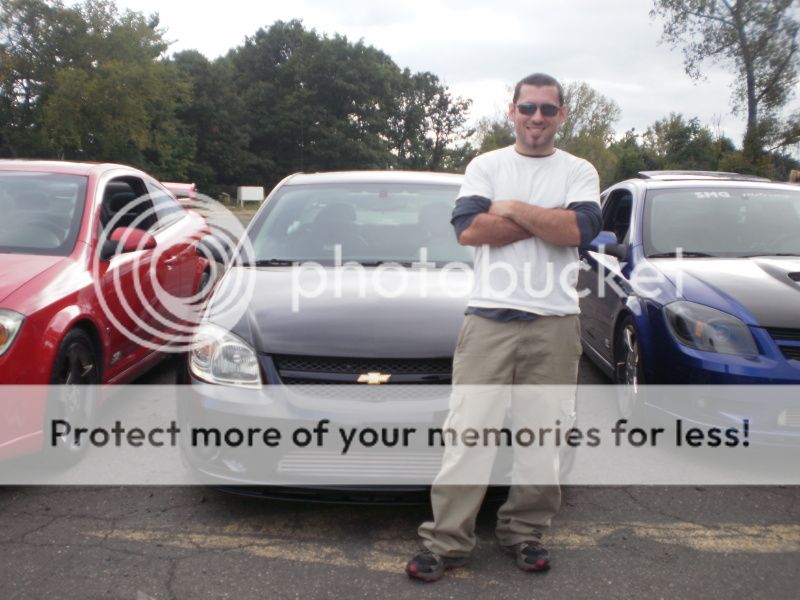My father bought me this as a daily driver when my Monte Carlo bent the valves (and also heavily urging me to get rid of the Monte). I call this Project Tupperware because it's a common nickname for Saturns here, due to the plastic dent-resistant body panels. My aunt even asked if I had to burp the sunroof when getting into it XD.
A little background info on Saturn for you Europeans since they're North American Market only.
Saturn was a project started by GM in the early 1980's. GM wanted to show they could make a high quality small car to take down the Japanese imports... something they weren't known for. The project started in 1982 as "Project Saturn". At the time it was just a code-name for the project. In 1985, GM Announced Saturn to the world, showing one of the development cars, and announcing Saturn would be independent from GM.
In 1988, Saturn built their factory and headquarters, a high-tech factory in Spring Hill, Tennessee.
In 1990, Saturn began building their first 2 cars, the SL sedan, and the SC coupe. The cars featured plastic body paneling heavily advertised for it's dent-resistant nature. The cars featured a platform unique to Saturn and Saturn's own engines, either a 1.9L SOHC 8 valve I4, or a 1.9L DOHC 16 valve I4, both of which shared the exact same block. Saturns were built almost entirely in their factory, with few, if any, imported parts in a manufacturing process that was both unique, efficient, and left the cars mostly hand-built. Saturn IMMEDIATELY became well-known for treating their customers great and for their no-haggle pricing. What this meant was that the price was never up or down from quoted. What you saw is what you paid. Dealers were allowed to set their own prices but most just went with the invoice pricing. Saturn was an immediate hit.
In 1992, Saturn entered the Canadian market. Saturn by now had received much praise for their customer satisfaction rating, the highest in the industry.
In 1993, Saturn built their 500,000th car, named Carla. 1993, Saturn also introduced the SW, an estate/station wagon variant.
In 1995, Saturn built their 1,000,000th car, a green SC2 coupe named "Jasper".
In 1994, Saturn hosted a "Homecoming", a 3 day "feel-good" event for Saturn owners at Saturn's factory in Tennessee, which further cemented relationships with customers and further established Saturn as caring about their customers. Saturn hosted one of these every few years after that.
In 1996 Saturn introduced the second generation SL and SW. Also in 1996, Saturn officials met with GM officials to discuss Saturn's future. Though the experiment was deemed a runaway success, the experiment had garnered much hatred inside GM. Saturn's development had drained 5 billion dollars from other projects, and Saturn's sales proved cannibalistic as 41% of Saturn's buyers already owned a GM car. GM voted to cut Saturn's development, which severely hampered the company.
In 1997, Saturn introduced the second generation SC coupe. Saturn also had found a partnership of sorts with European GM division Opel and Vauxhall, which tended to act independently from GM as well. The fruits of this partnership led to the development of the chain-drive 2.0, 2.2, and 2.4L Ecotec 4 cylinder engines in 2000.
In 1999, Saturn's SC coupe gained a door, a backwards-swinging half door on the driver's side allowing better rear seat access. The door was optional in 1999, but became standard in 2000.
2000 was a big year for Saturn. First Saturn introduced their first all-new car, a mid-size car called the L-series, in the same vain as their successful S-series car. The L-series was based on the Opel/Vauxhall Vectra, featured Saturn's trademark plastic body paneling, and featured the 2.2L Ecotec or the 3.0L DOHC V6. Saturn also introduced their third generation SL, SC, and SW cars.
In 2001, the SW was dropped due to lagging sales.
In 2002, Saturn introduced the VUE, a mid-size crossover SUV, utilizing GM's newest Theta platform and also the first public vehicle on the platform. Again, the VUE featured plastic body panels. The VUE had the same engine options as the L-series, but offered AWD. 2002 was the last year for Saturn's S-series cars.
In 2003, To replace the successful S-series cars, Saturn introduced the ION, the first car in the world to feature GM's new Delta platform (which would underpin the 2005+ Astra's). Once again, the ION featured the dent resistant panels, and the 2.2L Ecotec in base models. Saturn unveiled the cars in a large "apple" in New York City, commonly nicknamed "The Big Apple" to indicate how well it was in city's. The Ion featured 2 body-styles. A conventional 4 door sedan, and an unconventional 4 door coupe Saturn called the Quad Coupe, due to the 2 rear backwards swinging half-doors.
In 2004, Saturn introduced a new badge, "Redline", denoting a performance oriented vehicle. The first 2 vehicles to bear this badge were the VUE, which featured a 3.5L Honda SOHC V6, and the Ion, featuring a 205 HP supercharged 2.0L Ecotec. The Ion Redline was heavily promoted for it's Nurburgring tuned suspension. In 2004, The Vue also dropped the 3.0L DOHC V6 in favor of Honda's 3.5L SOHC V6, while the L-series retained the 3.0L DOHC.
In 2005, Chevrolet introduced the Cobalt, a replacement for their aging Cavalier. This car featured the same Delta platform as the Ion, and utilized Saturn's supercharged Ecotec and Nurburgring tuned suspension in the SS variant. The Cobalt SS Supercharged was heavily promoted as a world-beater. In 2005 Saturn's partnership with Opel/Vauxhall had grown stonger, as evidenced by the Saturn preVUE concept, showcasing the next generation Saturn VUE. 2005 was the last year for the L-series, and the Ion was updated to match it's Chevrolet Cobalt sibling's updates. 2005 was also the year Saturn officially merged with GM, becoming nothing more than another division. 2005 Also saw Saturn's first non-plastic bodied behicle in the lineup, the RELAY minivan (or MPV as you Europeans know it). This wasn't a true Saturn and was ACTUALLY a rebadged Chevrolet Uplander minivan. Engine options were a 3.5L Pontiac Developed OHV 12 valve 212 HP V6, and a Chevrolet developed 3.9L variant with 240 HP.
In 2006, Saturn introduced their first RWD car, a 2 seat roadster called the SKY, which was meant to do 2 things, take down the Mazda MX5 Miata and to promote Saturn's new 2.4L DOHC 16 valve VVT Ecotec. 2006 also saw a facelift for the aging VUE SUV.
2007 was another big year for Saturn. 2007 was the last year of the Ion, and the first year of the Saturn Aura, which replaced the L-series and was again heavily based on the Opel/Vauxhall Vectra. The car was so impressive it won 2007 North American Car Of The Year. Engine options in the AURA were the 2.4L Ecotec, a 2.4L Ecotec hybrid, a Pontiac Developed 212 HP 3.5L OHV 12 valve V6, and a Cadillac developed 240 HP 3.6L DOHC V6. 2007 was the last year for the Relay minivan. 2007 also saw the SKY introduced as the third REDLINE vehicle, featuring a turbocharged 2.0L Ecotec with 260 HP. This 260 HP version was sold by Opel as the Opel GT.
2008 was another big year for Saturn. Saturn introduced 3 new models. The Saturn Astra was introduced in 3 and 5 door hatch form to replace the ION. This was a rebadged Opel/Vauxhall Astra, built on the same assembly line, and even featuring the same 1.8L Ecotec engine (which was the only engine option in America). This was also the first, and only Saturn to feature a timing belt.
The Saturn Outlook was a full-size crossover SUV using GM's new Lambda platform and featured the Cadillac developed DOHC 24 valve 288 HP 3.6L V6 as the only engine option
2008 Also saw the second generation VUE, another rebadged vehicle. This time a rebadged Opel Antara. Engine options were the 2.4L Ecotec and the 3.6L V6, and a 2.4L hybrid.
2009 was a carryover year for Saturn and a sad one as well. As part of GM's bankruptcy proceedings, it was agreed that GM would shut down Saturn. As such, 2009 was the last year for the Saturn Astra, Aura, and Sky.
2010 was the last year for the Saturn Outlook and Saturn period. The end of a revolution in car sales.
In 2011, America saw the Opel Insignia rebadged as the Buick Regal here. This car was originally supposed to be the second generation Saturn Aura.
That is Saturn's history and Saturn's legacy.
Anyways, My father bought me a 2004 Ion 2 Quad Coupe to drive around in since my Monte Carlo was down and out. Featuring the 2.2L Ecotec, and getrag F23 manual, it has the same powertrain as many European Astra's and Vectra's. Sorry to say, but the 2.2L, 2.0L, and 2.4L Ecotecs were Saturn developed and borrowed from Saturn for use by Opel/Vauxhall. The Opel and Saturn developed Ecotecs tend to be easy to differentiate. Saturn developed Ecotec engines feature a timing chain. Opel developed Ecotec engines feature a timing belt. This applies only to those 3 displacements. All other Ecotec's were Opel developed. Anyways, here's photos of my Saturn Ion. I'll update this thread as the project progresses.
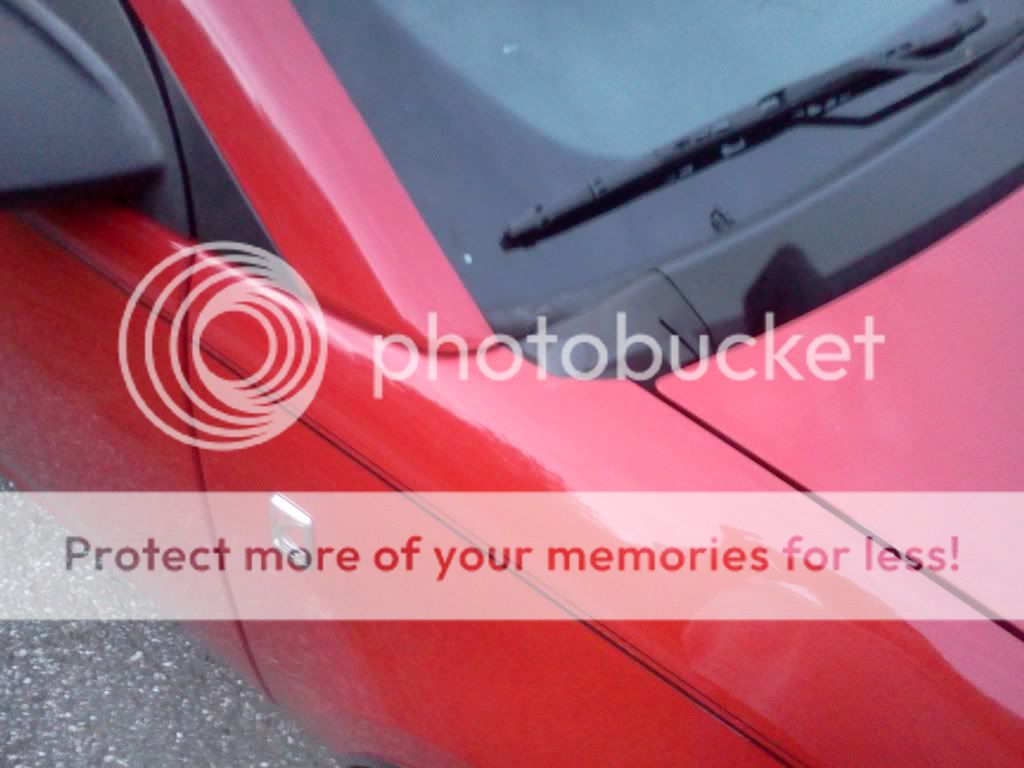
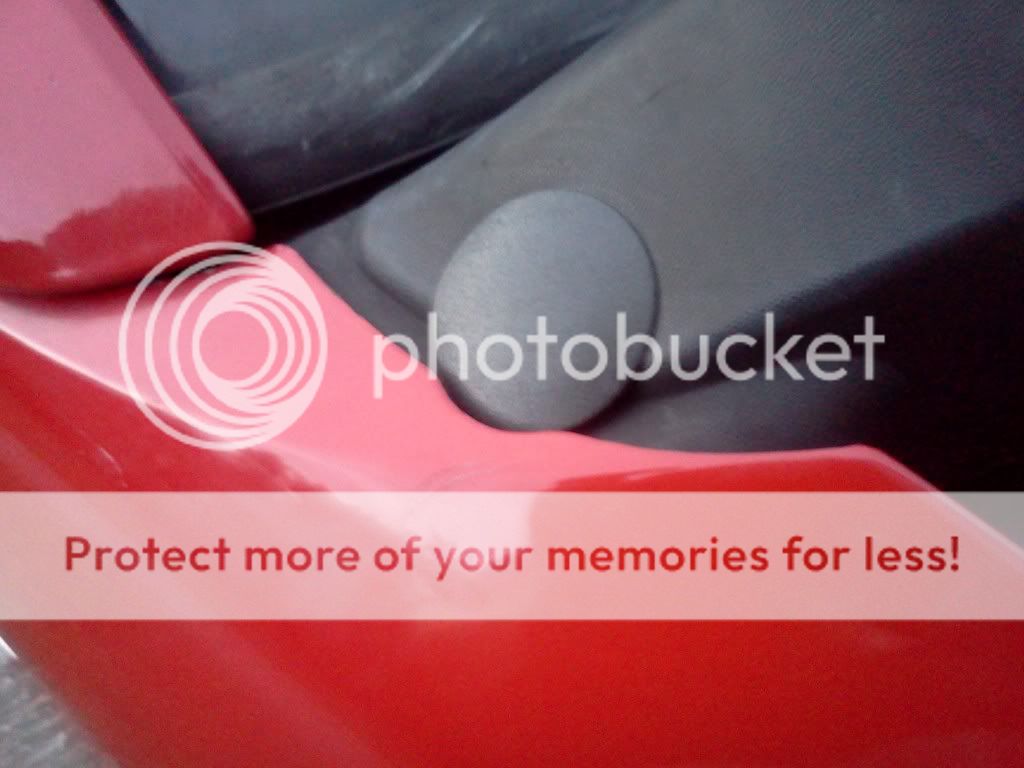
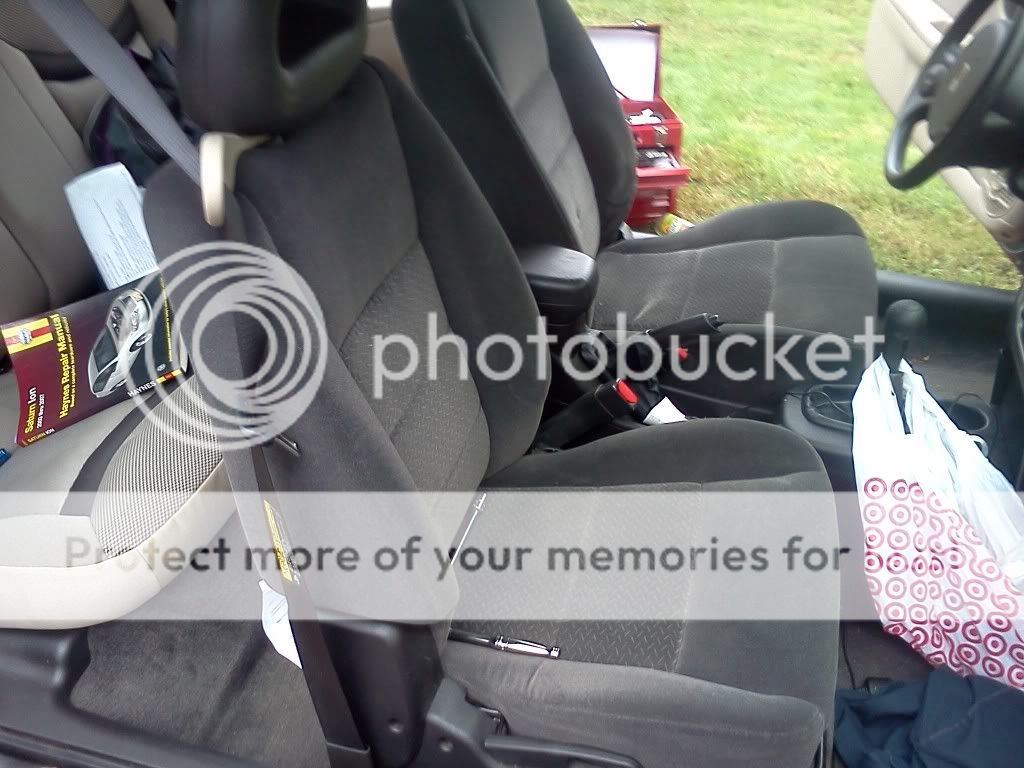
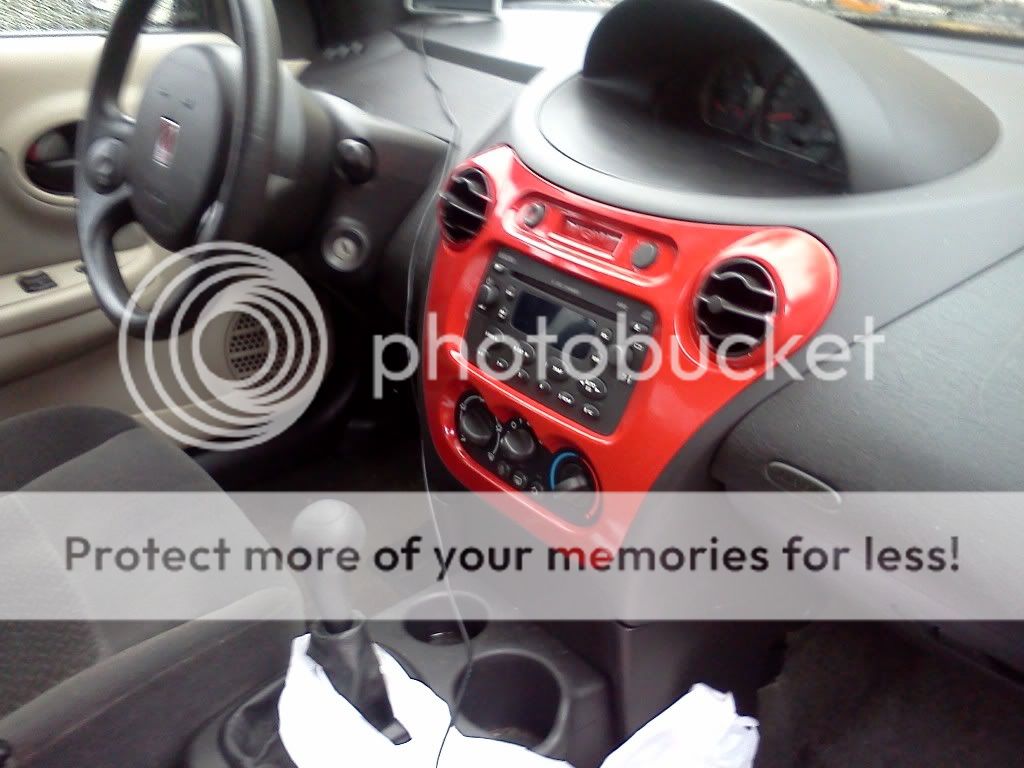
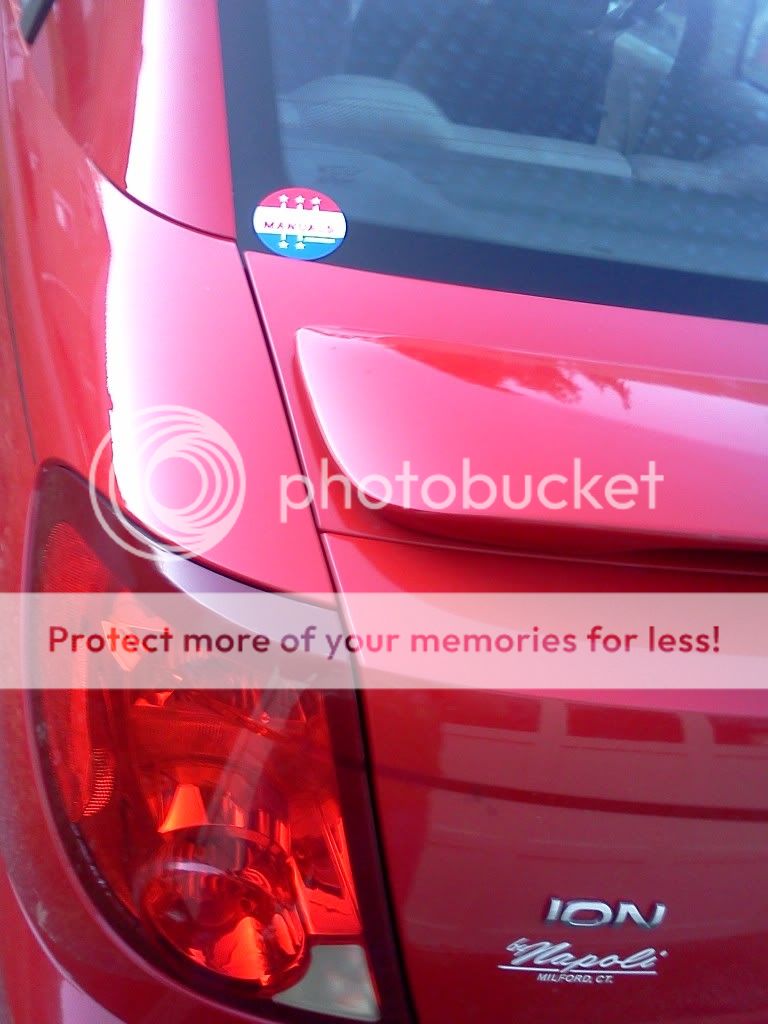
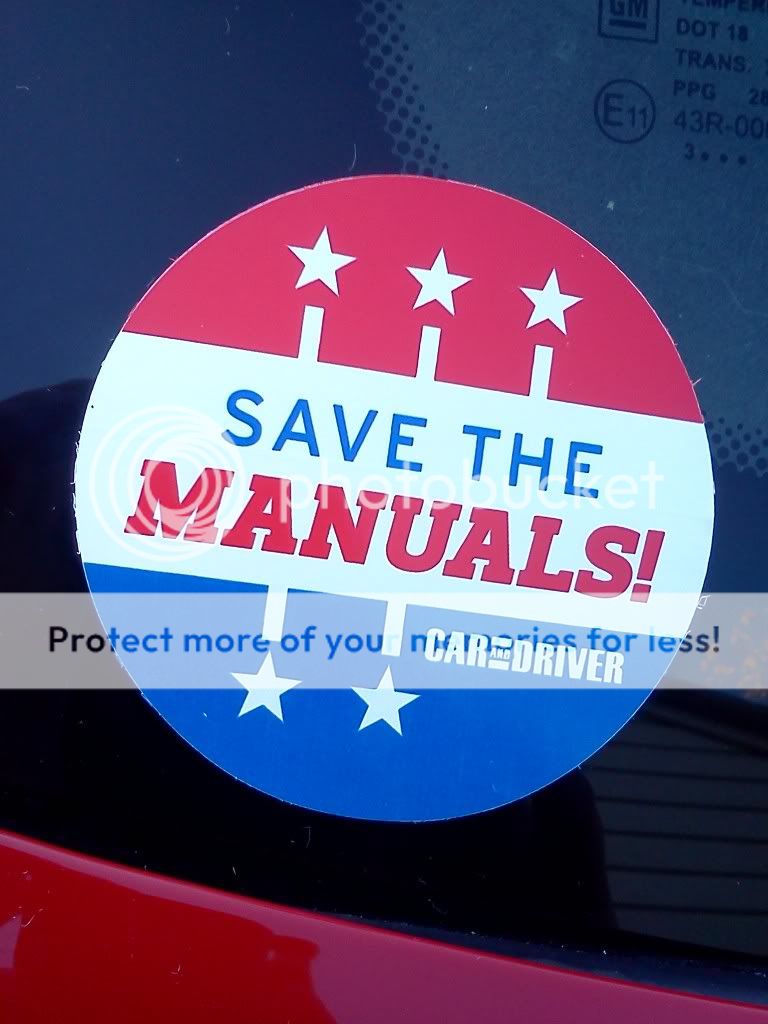
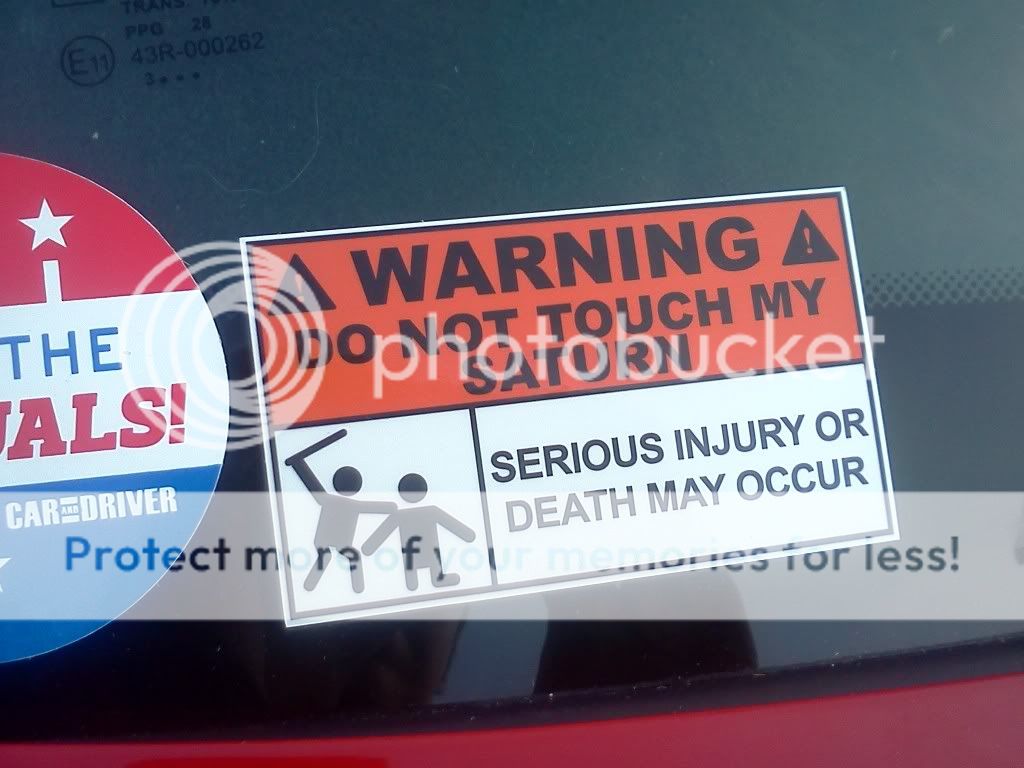
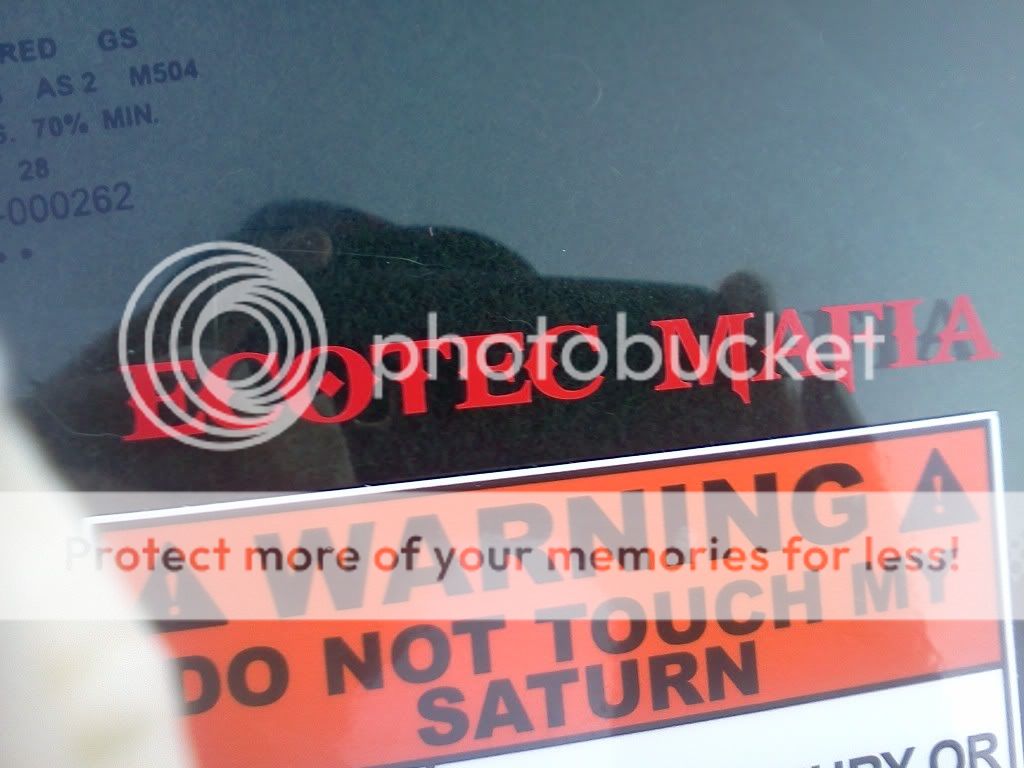
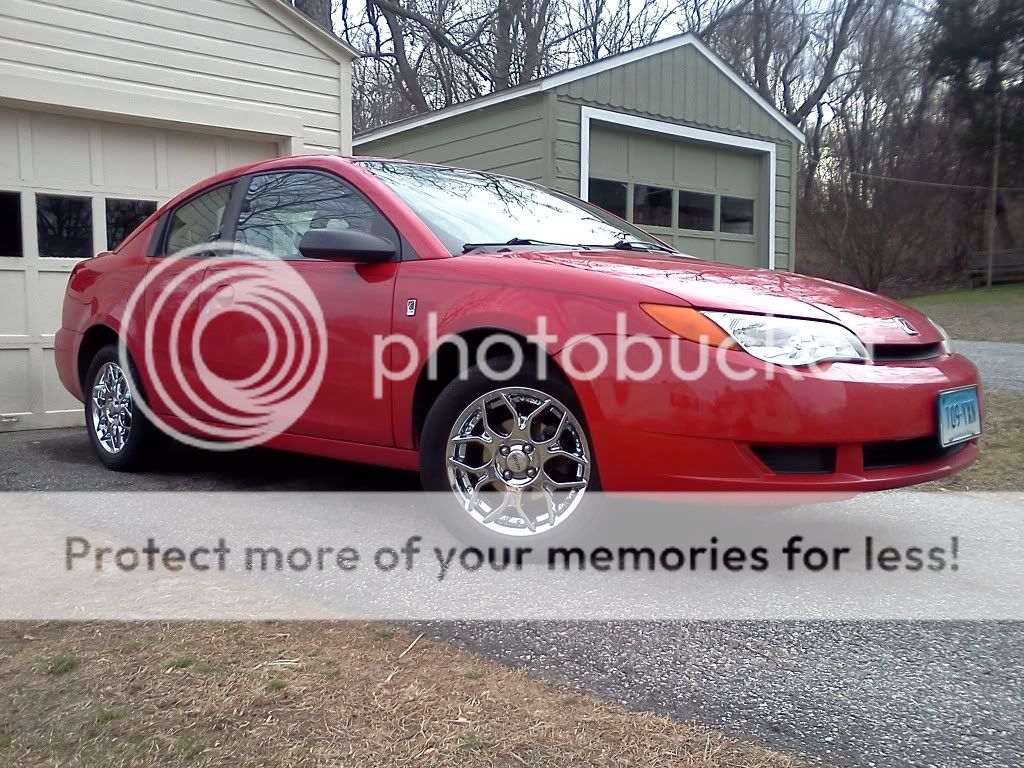
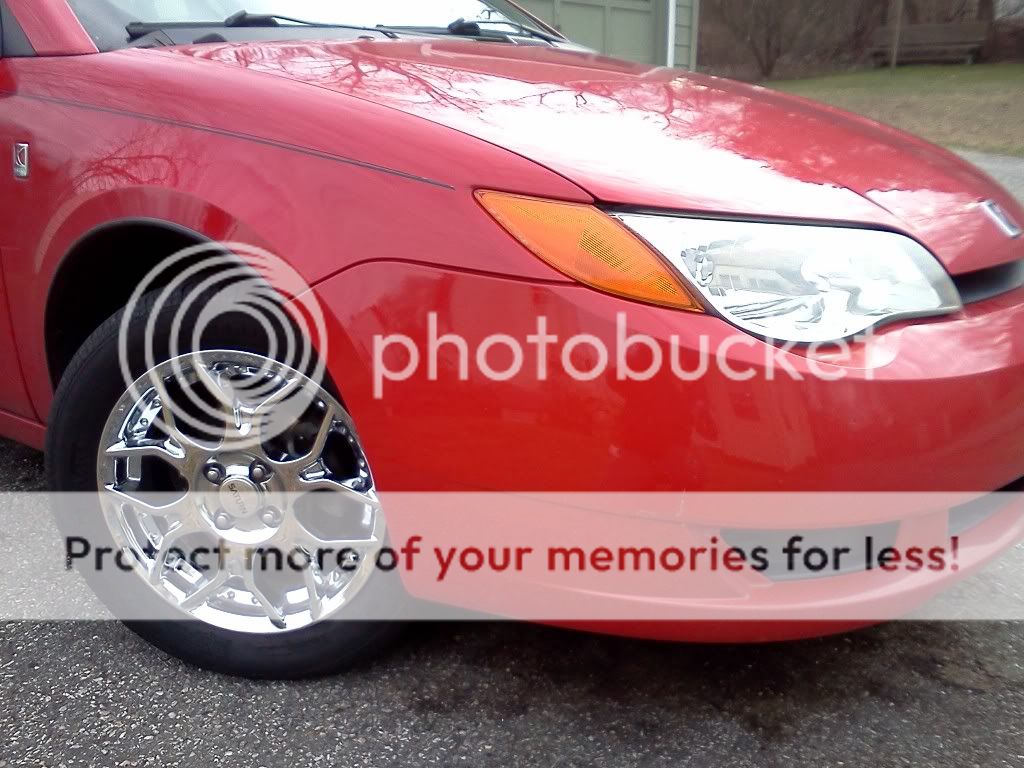
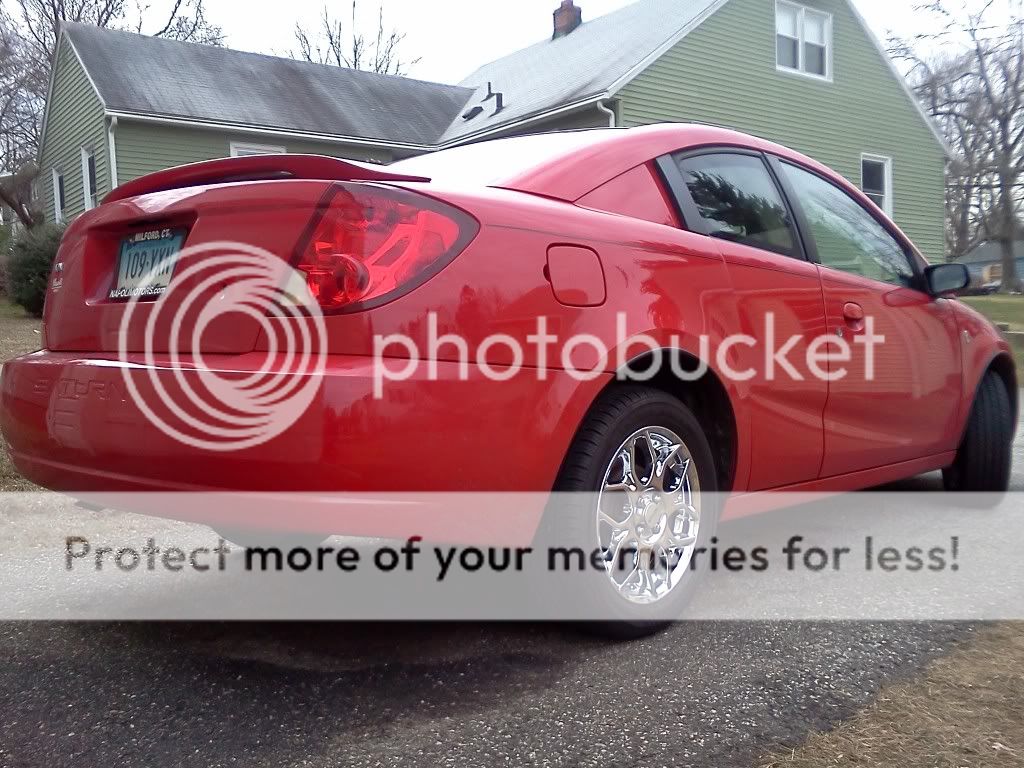
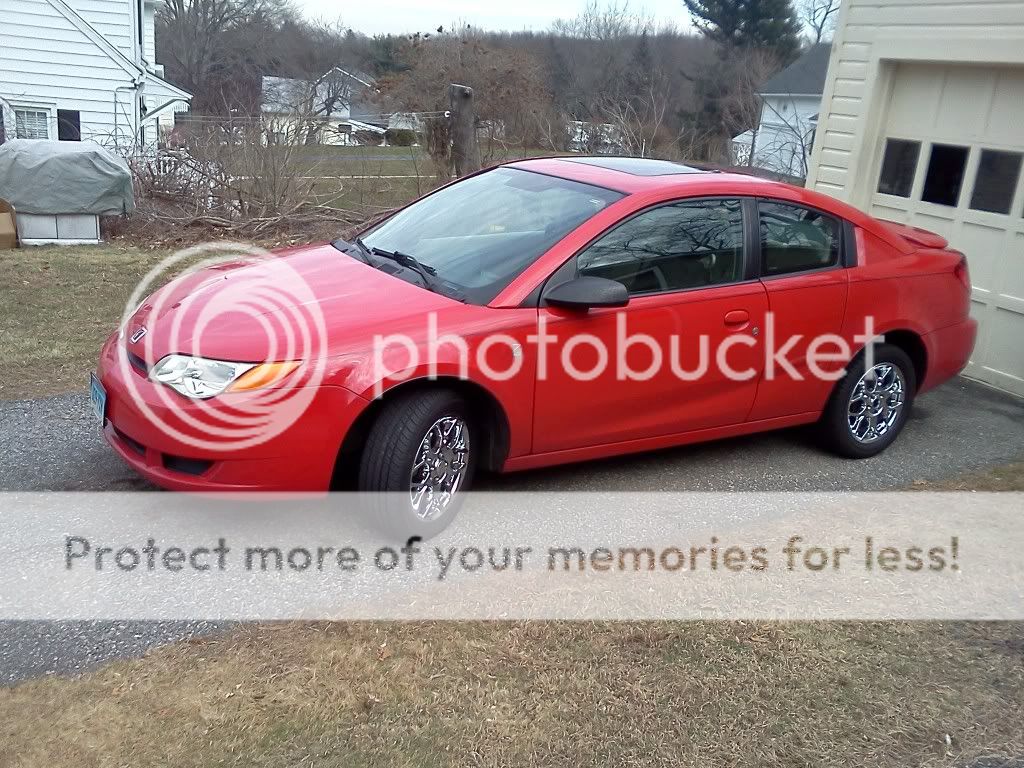
A little background info on Saturn for you Europeans since they're North American Market only.
Saturn was a project started by GM in the early 1980's. GM wanted to show they could make a high quality small car to take down the Japanese imports... something they weren't known for. The project started in 1982 as "Project Saturn". At the time it was just a code-name for the project. In 1985, GM Announced Saturn to the world, showing one of the development cars, and announcing Saturn would be independent from GM.
In 1988, Saturn built their factory and headquarters, a high-tech factory in Spring Hill, Tennessee.
In 1990, Saturn began building their first 2 cars, the SL sedan, and the SC coupe. The cars featured plastic body paneling heavily advertised for it's dent-resistant nature. The cars featured a platform unique to Saturn and Saturn's own engines, either a 1.9L SOHC 8 valve I4, or a 1.9L DOHC 16 valve I4, both of which shared the exact same block. Saturns were built almost entirely in their factory, with few, if any, imported parts in a manufacturing process that was both unique, efficient, and left the cars mostly hand-built. Saturn IMMEDIATELY became well-known for treating their customers great and for their no-haggle pricing. What this meant was that the price was never up or down from quoted. What you saw is what you paid. Dealers were allowed to set their own prices but most just went with the invoice pricing. Saturn was an immediate hit.
In 1992, Saturn entered the Canadian market. Saturn by now had received much praise for their customer satisfaction rating, the highest in the industry.
In 1993, Saturn built their 500,000th car, named Carla. 1993, Saturn also introduced the SW, an estate/station wagon variant.
In 1995, Saturn built their 1,000,000th car, a green SC2 coupe named "Jasper".
In 1994, Saturn hosted a "Homecoming", a 3 day "feel-good" event for Saturn owners at Saturn's factory in Tennessee, which further cemented relationships with customers and further established Saturn as caring about their customers. Saturn hosted one of these every few years after that.
In 1996 Saturn introduced the second generation SL and SW. Also in 1996, Saturn officials met with GM officials to discuss Saturn's future. Though the experiment was deemed a runaway success, the experiment had garnered much hatred inside GM. Saturn's development had drained 5 billion dollars from other projects, and Saturn's sales proved cannibalistic as 41% of Saturn's buyers already owned a GM car. GM voted to cut Saturn's development, which severely hampered the company.
In 1997, Saturn introduced the second generation SC coupe. Saturn also had found a partnership of sorts with European GM division Opel and Vauxhall, which tended to act independently from GM as well. The fruits of this partnership led to the development of the chain-drive 2.0, 2.2, and 2.4L Ecotec 4 cylinder engines in 2000.
In 1999, Saturn's SC coupe gained a door, a backwards-swinging half door on the driver's side allowing better rear seat access. The door was optional in 1999, but became standard in 2000.
2000 was a big year for Saturn. First Saturn introduced their first all-new car, a mid-size car called the L-series, in the same vain as their successful S-series car. The L-series was based on the Opel/Vauxhall Vectra, featured Saturn's trademark plastic body paneling, and featured the 2.2L Ecotec or the 3.0L DOHC V6. Saturn also introduced their third generation SL, SC, and SW cars.
In 2001, the SW was dropped due to lagging sales.
In 2002, Saturn introduced the VUE, a mid-size crossover SUV, utilizing GM's newest Theta platform and also the first public vehicle on the platform. Again, the VUE featured plastic body panels. The VUE had the same engine options as the L-series, but offered AWD. 2002 was the last year for Saturn's S-series cars.
In 2003, To replace the successful S-series cars, Saturn introduced the ION, the first car in the world to feature GM's new Delta platform (which would underpin the 2005+ Astra's). Once again, the ION featured the dent resistant panels, and the 2.2L Ecotec in base models. Saturn unveiled the cars in a large "apple" in New York City, commonly nicknamed "The Big Apple" to indicate how well it was in city's. The Ion featured 2 body-styles. A conventional 4 door sedan, and an unconventional 4 door coupe Saturn called the Quad Coupe, due to the 2 rear backwards swinging half-doors.
In 2004, Saturn introduced a new badge, "Redline", denoting a performance oriented vehicle. The first 2 vehicles to bear this badge were the VUE, which featured a 3.5L Honda SOHC V6, and the Ion, featuring a 205 HP supercharged 2.0L Ecotec. The Ion Redline was heavily promoted for it's Nurburgring tuned suspension. In 2004, The Vue also dropped the 3.0L DOHC V6 in favor of Honda's 3.5L SOHC V6, while the L-series retained the 3.0L DOHC.
In 2005, Chevrolet introduced the Cobalt, a replacement for their aging Cavalier. This car featured the same Delta platform as the Ion, and utilized Saturn's supercharged Ecotec and Nurburgring tuned suspension in the SS variant. The Cobalt SS Supercharged was heavily promoted as a world-beater. In 2005 Saturn's partnership with Opel/Vauxhall had grown stonger, as evidenced by the Saturn preVUE concept, showcasing the next generation Saturn VUE. 2005 was the last year for the L-series, and the Ion was updated to match it's Chevrolet Cobalt sibling's updates. 2005 was also the year Saturn officially merged with GM, becoming nothing more than another division. 2005 Also saw Saturn's first non-plastic bodied behicle in the lineup, the RELAY minivan (or MPV as you Europeans know it). This wasn't a true Saturn and was ACTUALLY a rebadged Chevrolet Uplander minivan. Engine options were a 3.5L Pontiac Developed OHV 12 valve 212 HP V6, and a Chevrolet developed 3.9L variant with 240 HP.
In 2006, Saturn introduced their first RWD car, a 2 seat roadster called the SKY, which was meant to do 2 things, take down the Mazda MX5 Miata and to promote Saturn's new 2.4L DOHC 16 valve VVT Ecotec. 2006 also saw a facelift for the aging VUE SUV.
2007 was another big year for Saturn. 2007 was the last year of the Ion, and the first year of the Saturn Aura, which replaced the L-series and was again heavily based on the Opel/Vauxhall Vectra. The car was so impressive it won 2007 North American Car Of The Year. Engine options in the AURA were the 2.4L Ecotec, a 2.4L Ecotec hybrid, a Pontiac Developed 212 HP 3.5L OHV 12 valve V6, and a Cadillac developed 240 HP 3.6L DOHC V6. 2007 was the last year for the Relay minivan. 2007 also saw the SKY introduced as the third REDLINE vehicle, featuring a turbocharged 2.0L Ecotec with 260 HP. This 260 HP version was sold by Opel as the Opel GT.
2008 was another big year for Saturn. Saturn introduced 3 new models. The Saturn Astra was introduced in 3 and 5 door hatch form to replace the ION. This was a rebadged Opel/Vauxhall Astra, built on the same assembly line, and even featuring the same 1.8L Ecotec engine (which was the only engine option in America). This was also the first, and only Saturn to feature a timing belt.
The Saturn Outlook was a full-size crossover SUV using GM's new Lambda platform and featured the Cadillac developed DOHC 24 valve 288 HP 3.6L V6 as the only engine option
2008 Also saw the second generation VUE, another rebadged vehicle. This time a rebadged Opel Antara. Engine options were the 2.4L Ecotec and the 3.6L V6, and a 2.4L hybrid.
2009 was a carryover year for Saturn and a sad one as well. As part of GM's bankruptcy proceedings, it was agreed that GM would shut down Saturn. As such, 2009 was the last year for the Saturn Astra, Aura, and Sky.
2010 was the last year for the Saturn Outlook and Saturn period. The end of a revolution in car sales.
In 2011, America saw the Opel Insignia rebadged as the Buick Regal here. This car was originally supposed to be the second generation Saturn Aura.
That is Saturn's history and Saturn's legacy.
Anyways, My father bought me a 2004 Ion 2 Quad Coupe to drive around in since my Monte Carlo was down and out. Featuring the 2.2L Ecotec, and getrag F23 manual, it has the same powertrain as many European Astra's and Vectra's. Sorry to say, but the 2.2L, 2.0L, and 2.4L Ecotecs were Saturn developed and borrowed from Saturn for use by Opel/Vauxhall. The Opel and Saturn developed Ecotecs tend to be easy to differentiate. Saturn developed Ecotec engines feature a timing chain. Opel developed Ecotec engines feature a timing belt. This applies only to those 3 displacements. All other Ecotec's were Opel developed. Anyways, here's photos of my Saturn Ion. I'll update this thread as the project progresses.












Last edited:


